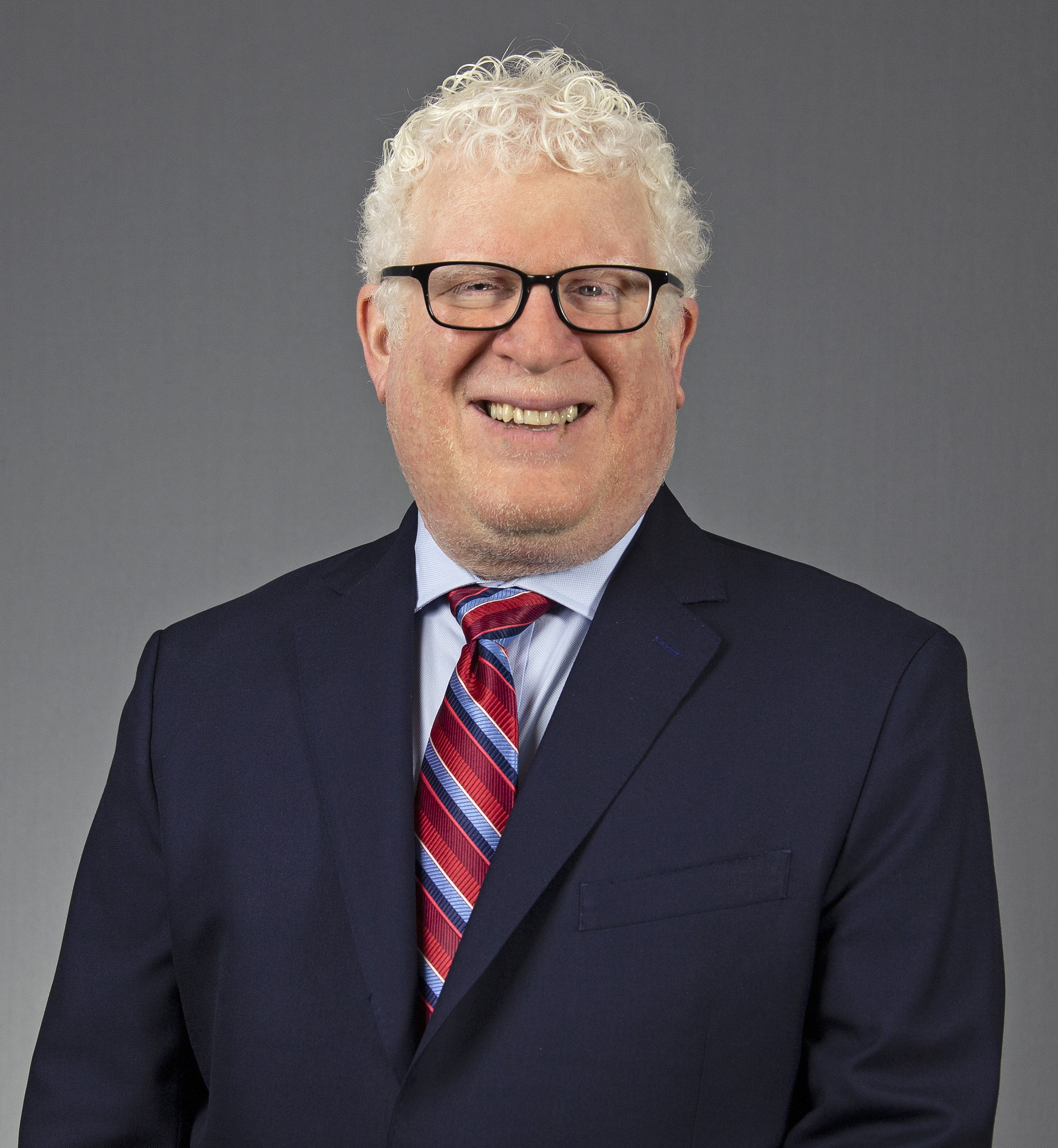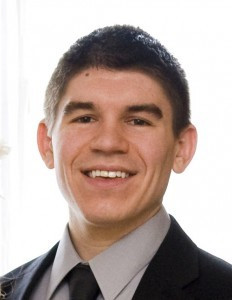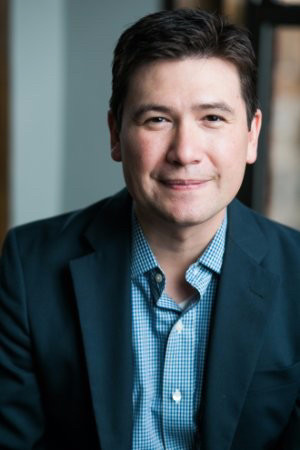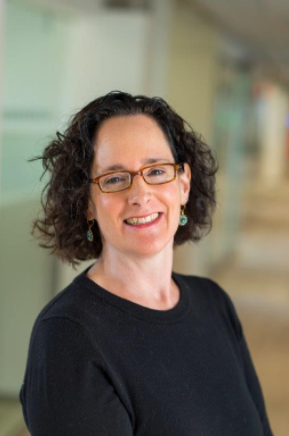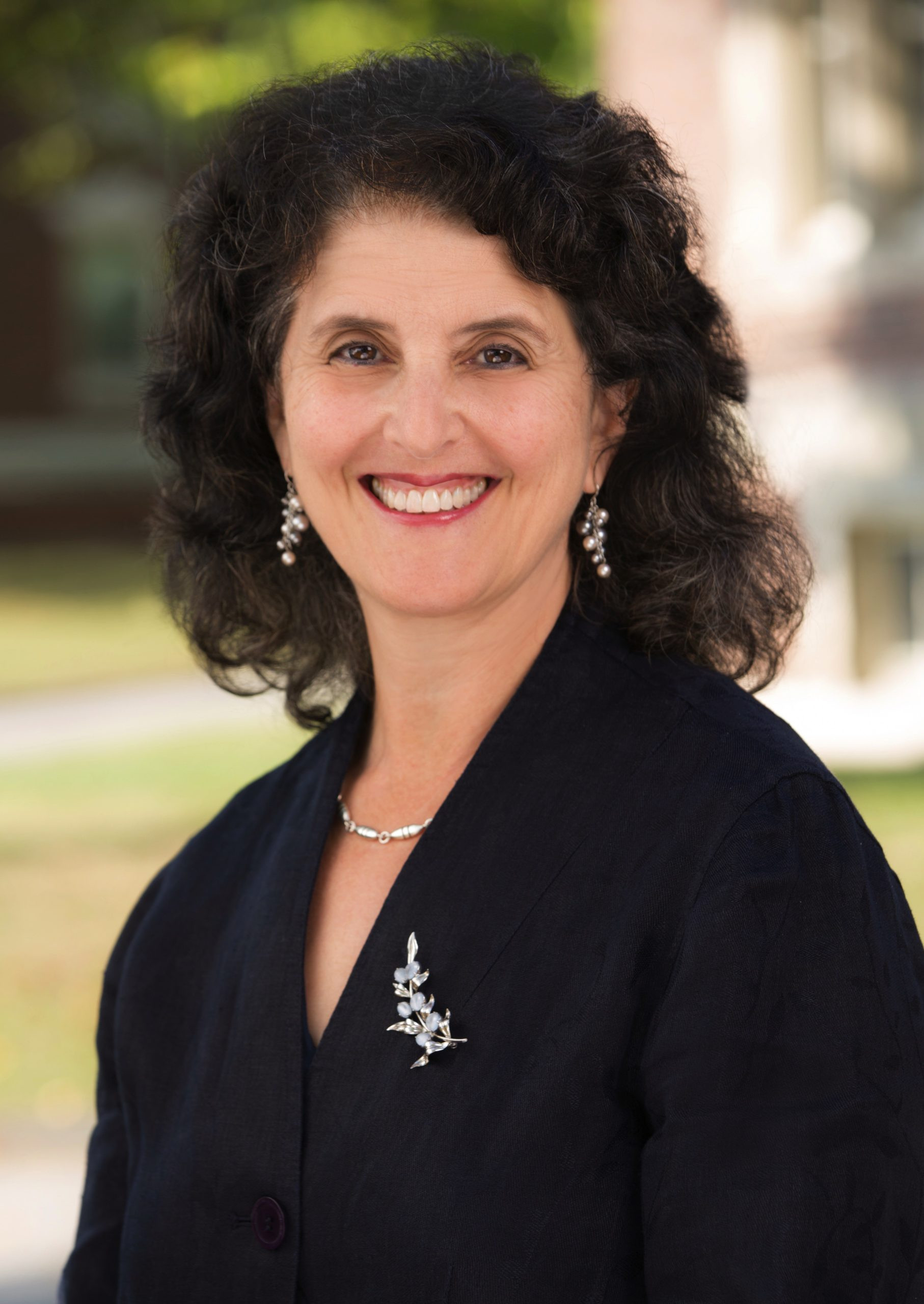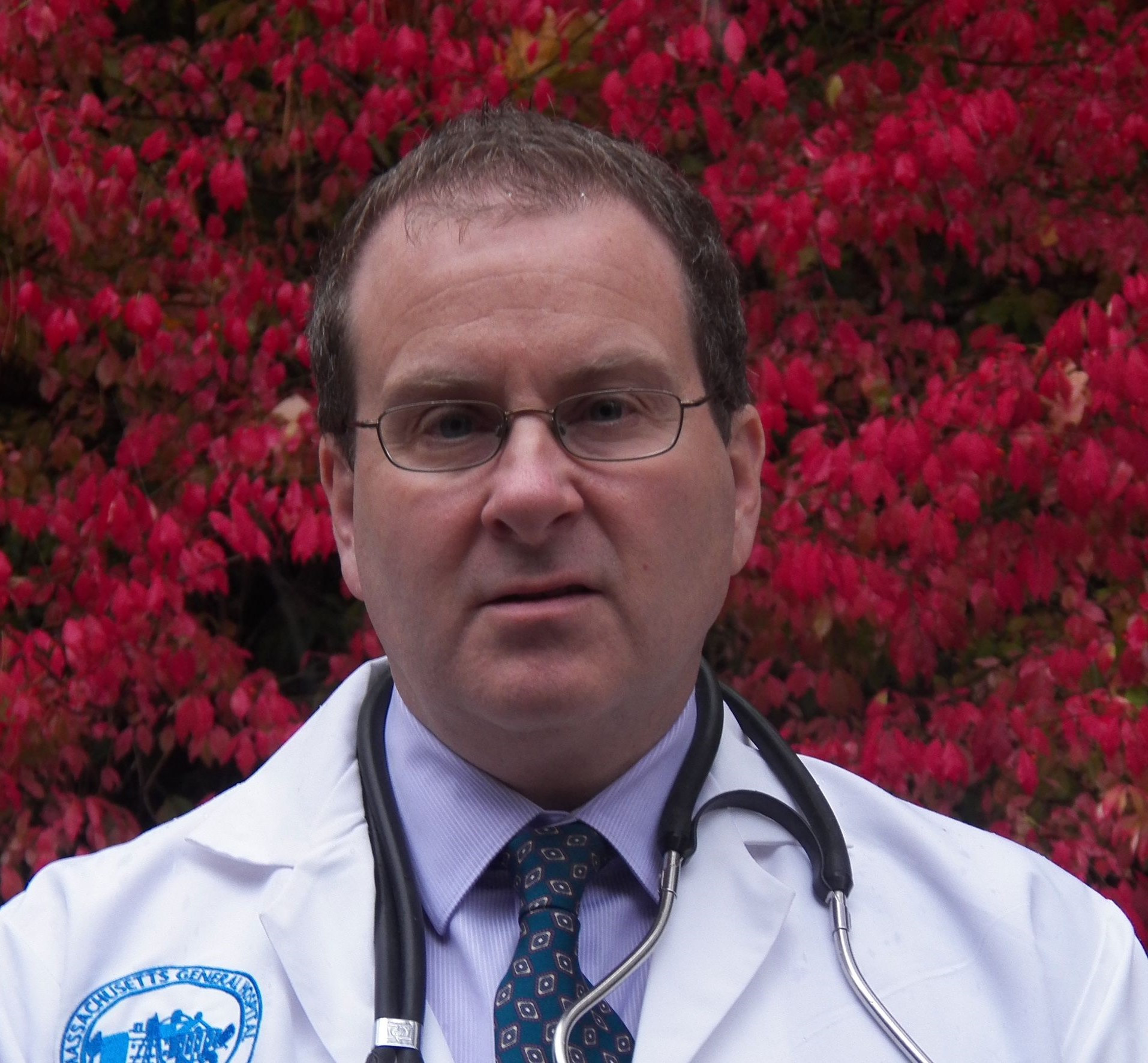alcohol use disorder<\/a>. A new <a href=https://www.health.harvard.edu/"https:////jamanetwork.com//journals//jamasurgery//article-abstract//2799697/">study finds that one type of surgery, gastric bypass, may increase the dangers of drinking much more than other weight-loss strategies.<\/p>\n <p>\"Alcohol-related problems after weight-loss surgery are a known risk. That's one reason we require people to abstain from alcohol for at least six months — and preferably a full year — before any weight-loss surgery,\" says Dr. Chika Anekwe, an obesity medicine specialist at the Harvard-affiliated Massachusetts General Hospital Weight Center. The new findings are interesting and make sense from a biological perspective, given the differences in the surgeries, she adds.<\/p>\n <h2>How does weight loss surgery affect alcohol absorption?<\/h2>\n <p>Weight-loss surgeries dramatically reduce the size of the stomach.<\/p>\n <ul>\n <li>For a sleeve gastrectomy, the most common procedure, the surgeon removes about 80% of the stomach, leaving a banana-shaped tube.<\/li>\n <li>For a gastric bypass, a surgeon converts the upper stomach into an egg-sized pouch. This procedure is called a bypass because most of the stomach, the valve that separates the stomach from the small intestine (the pylorus), and the first part of the small intestine are bypassed.<\/li>\n <\/ul>\n <p>The lining of the stomach contains alcohol dehydrogenase, an enzyme that breaks down alcohol. After weight-loss surgery, people have less of this enzyme available. So drinking wine, beer, or liquor will expose them to a higher dose of unmetabolized alcohol. Some alcohol is absorbed directly from the stomach, but most moves into the small intestine before being absorbed into the bloodstream.<\/p>\n <p>After a sleeve gastrectomy, the pyloric valve continues to slow down the passage of alcohol from the downsized stomach to the small intestine. But with a gastric bypass, the surgeon reroutes the small intestine and attaches it to the small stomach pouch, bypassing the pyloric valve entirely. As a result, drinking alcohol after a gastric bypass can lead to extra-high blood alcohol levels. That makes people feel intoxicated more quickly and may put them at a higher risk of alcohol use disorders, says Dr. Anekwe.<\/p>\n <h2>Findings from the study on weight loss surgery and alcohol<\/h2>\n <p>The study included nearly 7,700 people (mostly men) from 127 Veterans Health Administration centers who were treated for obesity between 2008 and 2021. About half received a sleeve gastrectomy. Nearly a quarter underwent gastric bypass. Another 18% were referred to MOVE!, a program that encourages increased physical activity and healthy eating.<\/p>\n <p>After adjusting for participants' <a href=https://www.health.harvard.edu/"https:////www.nhlbi.nih.gov//health//educational//lose_wt//BMI//bmicalc.htm/">body mass index<\/a> and alcohol use, researchers found that participants who had gastric bypass were 98% more likely to be hospitalized for alcohol-related reasons than those who had sleeve gastrectomy, and 70% more likely than those who did the MOVE! program. The rate of alcohol-related hospitalizations did not differ between people who had sleeve gastrectomy and those who did the MOVE! program.<\/p>\n <h2>The health harms of alcohol use disorder<\/h2>\n <p>Alcohol use disorder can lead to numerous <a href=https://www.health.harvard.edu/"https:////www.niaaa.nih.gov//alcohols-effects-health//alcohols-effects-body/">health problems<\/a>. Some require hospitalization, including alcoholic gastritis, alcohol-related hepatitis, alcohol-induced <a href=https://www.health.harvard.edu/"https:////www.health.harvard.edu//a_to_z//acute-pancreatitis-a-to-z/">pancreatitis, and alcoholic cardiomyopathy. As the study authors note, people who had gastric bypass surgery had a higher risk of being hospitalized for an alcohol use disorder, even though they drank the least amount of alcohol compared with the other study participants. This suggests that change in alcohol metabolism resulting from the surgery likely explains the findings.<\/p>\n <h2>Advice on alcohol if you've had weight-loss surgery or are considering it<\/h2>\n <p>\"We recommend that people avoid alcohol completely after any type of weight-loss surgery,\" says Dr. Anekwe. A year after the surgery, an occasional drink is acceptable, she adds, noting that most patients she sees don't have a problem with this restriction.<\/p>\n <p>People who undergo weight-loss surgeries have to be careful about everything they consume to ensure they get adequate amounts of important nutrients. Like sugary drinks, alcohol is devoid of nutrients — yet another reason to steer clear of it.<\/p>\n <p>Gastric bypass has become less popular than sleeve gastrectomy over the past decade, mostly because it's more invasive and slightly riskier. While the new study suggests yet another downside of gastric bypass, Dr. Anekwe says it can still be a viable option for people with severe obesity, as bypass leads to more weight loss and better control of blood sugar than the sleeve procedure.<\/p>\n <\/body>","excerpt":"\n <p>For people with obesity, weight-loss surgery can reverse or greatly improve many serious health issues, but also leaves people more likely to develop an alcohol use disorder. A new study finds that one type of surgery may increase the dangers of drinking much more than other weight-loss strategies.<\/p>\n ","short_excerpt":"\n <p>For people with obesity, weight-loss surgery can reverse or greatly improve many serious health issues, but also leaves people more likely to develop an alcohol use disorder. A new study finds that one type of surgery may increase the dangers of drinking much more than other weight-loss strategies.<\/p>\n ","description":null,"author":null,"slug":"is-alcohol-and-weight-loss-surgery-a-risky-combination-202304242916","sort_date":"2023-04-24T04:00:00.000000Z","contentable_type":"App\\Models\\Marketing\\BlogPost","contentable_id":2916,"replacement_content_id":null,"landing_page_landing_page_group_id":null,"ucr_content_id":"BL042423","publication_date":"2023-04-24T14:30:00.000000Z","last_review_date":null,"imported_at":"2023-04-25T09:00:03.000000Z","last_import_type":"update","last_modified_date":"2023-04-24T04:00:00.000000Z","active":1,"created_at":"2023-04-21T16:47:22.000000Z","updated_at":"2023-04-25T09:00:03.000000Z","deleted_at":null,"images_remapped":0,"old_product_id":null,"old_content_id":null,"hide_ads":0,"primary_content_topic_id":44,"ecommerce_type":"CATALOG","authors":[{"id":14,"cr_id":157,"featured":1,"hhp_staff":0,"hidden":0,"name":"Julie Corliss","title":null,"first_name":"Julie","middle_name":null,"last_name":"Corliss","suffix":null,"slug":"julie-corliss","byline":"Executive Editor, <a href=https://www.health.harvard.edu/"https:////www.health.harvard.edu//heart/">
Harvard Heart Letter<\/em><\/a>","description":"<p>Julie Corliss is the executive editor of the <em>Harvard Heart Letter<\/em>. Before working at Harvard, she was a medical writer and editor at <em>HealthNews<\/em>, a consumer newsletter affiliated with <em>The New England Journal of Medicine<\/em>. She is co-author of <em>Break Through Your Set Point: How to Finally Lose the Weight You Want and Keep it Off<\/em>. Julie earned a BA in biology from Oberlin College and a master’s certificate in science communication from the University of California at Santa Cruz.<\/p>","image_url":"https:\/\/d2icykjy7h7x7e.cloudfront.net\/authors\/yjasvaKFF0xhmqdSxslYrcQbI4yDn08soiRjfMAq.jpg","twitter_username":null,"sort_order":0,"created_at":"2021-05-11T09:59:48.000000Z","updated_at":"2022-05-16T18:02:57.000000Z","deleted_at":null,"pivot":{"content_id":18025,"author_id":14,"sort_order":1}}],"contentable":{"id":2916,"comments_open":1,"created_at":"2023-04-21T16:47:22.000000Z","updated_at":"2023-04-21T16:47:22.000000Z","deleted_at":null,"media":[]},"content_type":{"id":18,"name":"blog","slug":"blog","created_at":"2021-05-11T08:30:32.000000Z","updated_at":"2021-05-11T08:30:32.000000Z","deleted_at":null},"media":[{"id":13814,"model_type":"App\\Models\\Marketing\\Content","model_id":18025,"uuid":"c2105dbf-a786-47c9-9164-ae2b7ebeb716","collection_name":"contents","name":"20f66520-2f06-4c36-bd7a-8ea9a3aed517","file_name":"20f66520-2f06-4c36-bd7a-8ea9a3aed517.jpg","mime_type":"image\/jpeg","disk":"s3","conversions_disk":"s3","size":97078,"manipulations":[],"custom_properties":{"alt":"Assorted alcoholic drinks (wine, beer, cocktail, brandy, and shot of liquor) lined up on dark wood bar; blurred alcohol bottles in background"},"generated_conversions":{"micro":true,"thumb":true},"responsive_images":[],"order_column":13772,"created_at":"2023-04-21T16:47:22.000000Z","updated_at":"2023-04-21T16:47:26.000000Z","full_url":"https:\/\/domf5oio6qrcr.cloudfront.net\/medialibrary\/13814\/20f66520-2f06-4c36-bd7a-8ea9a3aed517.jpg"}],"primary_content_topic":{"id":44,"name":"Staying Healthy","old_names":null,"slug":"staying-healthy","description":"<p>Maintaining good health doesn't happen by accident. It requires work, smart lifestyle choices, and the occasional checkup and test.<\/p><p>A healthy diet is rich in fiber, whole grains, fresh fruits and vegetables, "good" or unsaturated fats, and omega-3 fatty acids. These dietary components turn down inflammation, which can damage tissue, joints, artery walls, and organs. Going easy on processed foods is another element of healthy eating. Sweets, foods made with highly refined grains, and sugar-sweetened beverages can cause spikes in blood sugar that can lead to early hunger. High blood sugar is linked to the development of diabetes, obesity, heart disease, and even dementia.<\/p><p>The Mediterranean diet meets all of the criteria for good health, and there is convincing evidence that it is effective at warding off heart attack, stroke, and premature death. The diet is rich in olive oil, fruits, vegetables, nuts and fish; low in red meats or processed meats; and includes a moderate amount of cheese and wine.<\/p><p>Physical activity is also necessary for good health. It can greatly reduce your risk of heart disease, stroke, type 2 diabetes, breast and colon cancer, depression, and falls. Physical activity improves sleep, endurance, and even sex. Aim for 150 minutes of moderate-intensity exercise every week, such as brisk walking. Strength training, important for balance, bone health, controlling blood sugar, and mobility, is recommended 2-3 times per week.<\/p><p>Finding ways to reduce stress is another strategy that can help you stay healthy, given the connection between stress and a variety of disorders. There are many ways to bust stress. Try, meditation, mindfulness, yoga, playing on weekends, and taking vacations.<\/p><p>Finally, establish a good relationship with a primary care physician. If something happens to your health, a physician you know —and who knows you — is in the best position to help. He or she will also recommend tests to check for hidden cancer or other conditions.<\/p>","is_primary":1,"additional_content":null,"created_at":"2021-03-02T16:37:04.000000Z","updated_at":"2023-05-01T14:56:22.000000Z","deleted_at":null,"canonical":"https:\/\/www.health.harvard.edu\/topics\/staying-healthy"}},{"id":18024,"content_source_id":2,"content_type_id":18,"content_access_type_id":1,"title":"Preventing ovarian cancer: Should women consider removing fallopian tubes?","short_title":"","subheading":"New recommendations highlight potential benefits.","summary":"\n <p>Ovarian cancer, which claims about 13,000 lives each year, is hard to detect in early stages. Recent guidance from professional groups recommends removing fallopian tubes to help prevent ovarian cancer if women are undergoing gynecologic surgery and are finished with childbearing.<\/p>\n ","content":"<body>\n <p>\n <img alt=\"3-D graphic of female reproductive system showing a fallopian tube and ovary and part of the uterus in orange and yellow\" src=https://www.health.harvard.edu/"http:////content.health.harvard.edu//wp-content//uploads//2023//04//87cf1fce-4127-4141-9714-0cf65bbbbafd.jpg/" style=\"height:337px; width:600px\" imageid=\"87cf1fce-4127-4141-9714-0cf65bbbbafd\"\/>\n <\/p>\n <p>Should a woman consider having her fallopian tubes removed to lower her risk for developing ovarian cancer? Recent <a href=https://www.health.harvard.edu/"https:////ocrahope.org//what-if-you-could-prevent-ovarian-cancer///" target=\"_blank\">recommendations<\/a> from the Ovarian Cancer Research Alliance (OCRA), endorsed by the Society for Gynecologic Oncology, encourage this strategy, if women are finished having children and would be undergoing gynecologic surgery anyway for other reasons.<\/p>\n <h2>Why is this new guidance being offered?<\/h2>\n <p>Ovarian cancer <a href=https://www.health.harvard.edu/"https:////www.cancer.org//cancer//ovarian-cancer//about//key-statistics.html/" target=\"_blank\">claims about 13,000 lives each year<\/a>, according to the American Cancer Society. The new guidance builds on established advice for women with high-risk genetic mutations or a strong family history of ovarian cancer.<\/p>\n <p>This idea isn't new for women at average risk for ovarian cancer, either: in 2019, the American College of Obstetricians and Gynecologists (ACOG) floated this strategy in a committee opinion.<\/p>\n <p>A Harvard expert agrees the approach is sound, considering established evidence that many cases of aggressive ovarian cancers arise from cells in the fallopian tubes.<\/p>\n <p>\"We've known for a long time that many hereditary cases of ovarian cancer likely originate in lesions in the fallopian tubes,\" says Dr. Katharine Esselen, a gynecologic oncologist at Beth Israel Deaconess Medical Center. \"Although we group all of these cancers together and call them ovarian cancer, a lot actually start in the fallopian tubes.\"<\/p>\n <h2>Can ovarian cancer be detected early through symptoms or screening?<\/h2>\n <p>No — which helps fuel these recommendations.<\/p>\n <p>Ovarian cancer is notoriously difficult to detect. Symptoms tend to be vague and could be related to many other health problems. Signs include bloating, pelvic pain or discomfort, changes in bowel or bladder habits, feeling full earlier when eating, fatigue, unusual discharge or bleeding, and pain during sex.<\/p>\n <p>Disappointing results from a large 2021 study in the United Kingdom reported in <em>The Lancet<\/em> show that lowering the risks of a late-stage diagnosis isn't easy. The <a href=https://www.health.harvard.edu/"https:////www.thelancet.com//journals//lancet//article//PIIS0140-6736(21)00731-5//fulltext/" target=\"_blank\">trial<\/a> tracked more than 200,000 women for an average of 16 years. It found that screening average-risk women with ultrasound and a CA-125 blood test doesn't reduce deaths from the disease. By itself, the CA-125 blood test isn't considered reliable for screening because it's not accurate or sensitive enough to detect ovarian cancer.<\/p>\n <p>Only 10% to 20% of patients are diagnosed at early stages of ovarian cancer, before a tumor spreads, Dr. Esselen notes. \"There's never been a combination of screenings that has reliably identified the majority of these cancers early, when they're more treatable,\" she says.<\/p>\n <h2>What does it mean to be at higher risk for ovarian cancer?<\/h2>\n <p>Family history is the top risk factor for the disease, which is diagnosed in nearly 20,000 American women annually. A woman is considered at higher risk of ovarian cancer if her mother, sister, grandmother, aunt, or daughter has had the disease.<\/p>\n <p>Additionally, inherited mutations in the BRCA1 or BRCA2 gene raise risk considerably, according to the <a href=https://www.health.harvard.edu/"https:////www.cancer.gov//about-cancer//causes-prevention//genetics//brca-fact-sheet#how-much-does-an-inherited-harmful-variant-in-brca1-or-brca2-increase-a-womans-risk-of-breast-and-ovarian-cancer\" target=\"_blank\">National Cancer Institute<\/a>. (These mutations are <a href=https://www.health.harvard.edu/"https:////www.cdc.gov//cancer//breast//young_women//bringyourbrave//hereditary_breast_cancer//higher_risk_brca.htm/" target=\"_blank\">more common among certain groups<\/a>, including people of Ashkenazi Jewish heritage.) While about 1.2% of women overall will develop ovarian cancer in their lifetime, up to 17% of those with a BRCA2 mutation and up to 44% with a BRCA1 mutation will do so by ages 70 to 80.<\/p>\n <h2>How much can surgery lower the odds of ovarian cancer?<\/h2>\n <p>It's not clear that <em>all<\/em> women — even those not scheduled for surgery — should undergo removal of their fallopian tubes to reduce this risk once they finish having children, Dr. Esselen says. This surgery can't totally eliminate the possibility of ovarian cancer — and surgery carries its own risks. She recommends discussing options with your doctor depending on your level of risk for this disease:<\/p>\n <p style=\"margin-left:48px\"><strong>For those at average risk for ovarian cancer:<\/strong> Available data seem to support the idea of removing the fallopian tubes. Studies of women who underwent tubal ligation (\"tying the tubes\") or removal to avoid future pregnancies indicate their future risks of ovarian cancer <a href=https://www.health.harvard.edu/"https:////www.acog.org//clinical//clinical-guidance//committee-opinion//articles//2019//04//opportunistic-salpingectomy-as-a-strategy-for-epithelial-ovarian-cancer-prevention/" target=\"_blank\">dropped by 25% to 65% compared to their peers<\/a>. And if a woman is already undergoing gynecologic surgery, such as a hysterectomy, the potential benefits likely outweigh the risks.<\/p>\n <p style=\"margin-left:48px\">Before menopause, removing the fallopian tubes while leaving the ovaries in place is preferable to removing both. That's because estrogen produced by the ovaries can help protect against health problems such as cardiovascular disease and osteoporosis. Leaving the ovaries also prevents suddenly experiencing symptoms of menopause.<\/p>\n <p style=\"margin-left:48px\">\"The fallopian tubes don't produce any hormones and aren't really needed for anything other than transporting the egg,\" she says. \"So there's little downside to removing them at the time of another gynecologic procedure if a woman is no longer interested in fertility.\"<\/p>\n <p style=\"margin-left:48px\"><strong>For those at high risk for ovarian cancer:<\/strong> \"In a world where we don't have good screening tools for ovarian cancer, it makes sense to do something as dramatic as surgery to remove both ovaries and fallopian tubes when a woman is known to be at higher risk because of a strong family history or a BRCA gene mutations,\" Dr. Esselen says.<\/p>\n <p style=\"margin-left:48px\">Currently, preliminary evidence suggests it may be safe to proactively remove the fallopian tubes while delaying removal of the ovaries to closer to the time of menopause to avoid an early menopause. However, it's unclear how much this procedure lowers the odds of developing ovarian cancer.<\/p>\n <p style=\"margin-left:48px\">\"Generally, the findings so far have focused on the safety of the surgery itself and women's quality of life,\" Dr. Esselen says. \"Long-term data in high-risk women takes a great number of years to accumulate. We need this data to know whether removing the fallopian tubes alone is equally effective in preventing ovarian cancer as removing the tubes and ovaries.\"<\/p>\n <h2>Discussing your options is key<\/h2>\n <p>Ultimately, Dr. Esselen says that she advocates OCRA's new recommendations. \"For anyone who's completed childbearing, if I'm doing surgery that wouldn't necessarily include routinely removing their fallopian tubes, I'm offering it,\" she says. \"A woman and her doctor should always discuss this at the time she's having gynecologic surgery.\"<\/p>\n <\/body>","excerpt":"\n <p>Ovarian cancer, which claims about 13,000 lives each year, is hard to detect in early stages. Recent guidance from professional groups recommends removing fallopian tubes to help prevent ovarian cancer if women are undergoing gynecologic surgery and are finished with childbearing.<\/p>\n ","short_excerpt":"\n <p>Ovarian cancer, which claims about 13,000 lives each year, is hard to detect in early stages. Recent guidance from professional groups recommends removing fallopian tubes to help prevent ovarian cancer if women are undergoing gynecologic surgery and are finished with childbearing.<\/p>\n ","description":null,"author":null,"slug":"preventing-ovarian-cancer-should-women-consider-removing-fallopian-tubes-202304212915","sort_date":"2023-04-21T04:00:00.000000Z","contentable_type":"App\\Models\\Marketing\\BlogPost","contentable_id":2915,"replacement_content_id":null,"landing_page_landing_page_group_id":null,"ucr_content_id":"BL042023","publication_date":"2023-04-21T10:30:00.000000Z","last_review_date":null,"imported_at":"2023-04-21T09:00:02.000000Z","last_import_type":"update","last_modified_date":"2023-04-20T04:00:00.000000Z","active":1,"created_at":"2023-04-20T20:40:42.000000Z","updated_at":"2023-04-21T09:00:02.000000Z","deleted_at":null,"images_remapped":0,"old_product_id":null,"old_content_id":null,"hide_ads":0,"primary_content_topic_id":46,"ecommerce_type":"CATALOG","authors":[{"id":420,"cr_id":779,"featured":0,"hhp_staff":0,"hidden":0,"name":"Maureen Salamon","title":null,"first_name":"Maureen","middle_name":null,"last_name":"Salamon","suffix":null,"slug":"maureen-salamon","byline":"Executive Editor, <a href=https://www.health.harvard.edu/"https:////www.health.harvard.edu//womens/">Harvard Women's Health Watch<\/em><\/a>","description":"<p>Maureen Salamon is executive editor of <em>Harvard Women’s Health Watch<\/em>. She began her career as a newspaper reporter and later covered health and medicine for a wide variety of websites, magazines, and hospitals. Her work has appeared in <em>The New York Times<\/em>, <em>The Atlantic<\/em>, CNN.com, WebMD, Medscape and HealthDay, among other major outlets. Maureen earned a BA in print journalism from Penn State University.<\/p>","image_url":"https:\/\/d2icykjy7h7x7e.cloudfront.net\/authors\/MWQyHwiFAPooqhDKsjTfFjCCCoIooqQNLj1M7LRO.jpg","twitter_username":null,"sort_order":0,"created_at":"2022-02-24T21:39:38.000000Z","updated_at":"2022-07-17T15:04:53.000000Z","deleted_at":null,"pivot":{"content_id":18024,"author_id":420,"sort_order":1}}],"contentable":{"id":2915,"comments_open":1,"created_at":"2023-04-20T20:40:42.000000Z","updated_at":"2023-04-20T20:40:42.000000Z","deleted_at":null,"media":[]},"content_type":{"id":18,"name":"blog","slug":"blog","created_at":"2021-05-11T08:30:32.000000Z","updated_at":"2021-05-11T08:30:32.000000Z","deleted_at":null},"media":[{"id":13813,"model_type":"App\\Models\\Marketing\\Content","model_id":18024,"uuid":"c04b666d-e2d5-4953-b9dd-f6d24151e7d8","collection_name":"contents","name":"87cf1fce-4127-4141-9714-0cf65bbbbafd","file_name":"87cf1fce-4127-4141-9714-0cf65bbbbafd.jpg","mime_type":"image\/jpeg","disk":"s3","conversions_disk":"s3","size":104036,"manipulations":[],"custom_properties":{"alt":"3-D graphic of female reproductive system showing a fallopian tube and ovary and part of the uterus in orange and yellow"},"generated_conversions":{"micro":true,"thumb":true},"responsive_images":[],"order_column":13771,"created_at":"2023-04-20T20:40:42.000000Z","updated_at":"2023-04-20T20:40:44.000000Z","full_url":"https:\/\/domf5oio6qrcr.cloudfront.net\/medialibrary\/13813\/87cf1fce-4127-4141-9714-0cf65bbbbafd.jpg"}],"primary_content_topic":{"id":46,"name":"Women's Health","old_names":"Menopause","slug":"womens-health","description":"<p>Women have many unique health concerns — menstrual cycles, pregnancy, birth control, menopause — and that's just the beginning. A number of health issues affect only women and others are more common in women. What's more, men and women may have the same condition, but different symptoms. Many diseases affect women differently and may even require distinct treatment.<\/p><p>Treatments for breast cancer include removal of the affected breast (mastectomy), removal of the tumor and small amount of surrounding tissue (lumpectomy), radiation therapy, chemotherapy, and hormone therapy.<\/p>","is_primary":1,"additional_content":null,"created_at":"2021-03-02T16:37:04.000000Z","updated_at":"2023-04-13T15:17:57.000000Z","deleted_at":null,"canonical":"https:\/\/www.health.harvard.edu\/topics\/womens-health"}},{"id":17981,"content_source_id":2,"content_type_id":18,"content_access_type_id":1,"title":"Healthier planet, healthier people","short_title":"","subheading":"Five small steps toward better health for you and planet Earth.","summary":"\n <p>As the impacts of climate change on Earth threaten our well-being, the concept of planetary health acknowledges that the ecosystem and our health are inextricably intertwined. While individual efforts may seem small, here are five small steps that help make a difference when taken collectively.<\/p>\n ","content":"<body>\n <p>\n <em>\n <img alt=\"A crystal globe with countries etched on, circled by stethoscope with red heart; Earth health and our health connect\" src=https://www.health.harvard.edu/"http:////content.health.harvard.edu//wp-content//uploads//2023//04//1528cc88-71f7-4707-a95f-912b757db835.jpg/" style=\"height:400px; width:600px\" imageid=\"1528cc88-71f7-4707-a95f-912b757db835\"\/>\n <\/em>\n <\/p>\n <p><em>Everything is connected.<\/em> You've probably heard that before, but it bears repeating. Below are five ways to boost both your individual health and the health of our planet — a combination that environmentalists call co-benefits.<\/p>\n <h2>How your health and planetary health intersect<\/h2>\n <p>Back in 1970, Earth Day was founded as a day of awareness about environmental issues. Never has awareness of our environment seemed more important than now. The impacts of climate change on Earth — fires, storms, <a href=https://www.health.harvard.edu/"https:////www.health.harvard.edu//blog//respiratory-health-harms-often-follow-flooding-taking-these-steps-can-help-202211092848/" style=\"text-decoration:underline\">floods<\/a>, droughts, <a href=https://www.health.harvard.edu/"https:////www.health.harvard.edu//blog//extreme-heat-staying-safe-if-you-have-health-issues-202108062563/" style=\"text-decoration:underline\">heat waves<\/a>, rising sea levels, species extinction, and more — directly or indirectly threaten our well-being, especially for those most vulnerable. For example, <a href=https://www.health.harvard.edu/"https:////www.health.harvard.edu//blog//even-low-level-air-pollution-may-harm-health-202202212692/" style=\"text-decoration:underline\">air pollution<\/a> from fossil fuels and fires contributes to lung problems and hospitalizations. <a href=https://www.health.harvard.edu/"https:////www.health.harvard.edu//blog//tick-season-is-expanding-protect-yourself-against-lyme-disease-202108052564/" style=\"text-decoration:underline\">Geographic and seasonal boundaries for ticks<\/a> and mosquitoes, which are carriers of infectious diseases, expand as regions warm.<\/p>\n <p>The concept of planetary health acknowledges that the ecosystem and our health are inextricably intertwined. Actions and events have complex downstream effects: some are expected, others are surprising, and many are likely unrecognized. While individual efforts may seem small, collectively they can move the needle — even ever so slightly — in the right direction.<\/p>\n <h2>Five ways to improve personal and planetary health<\/h2>\n <p>\n <strong>Adopt plant-forward eating.<\/strong>\n <\/p>\n <p>This means increasing <a href=https://www.health.harvard.edu/"https:////www.health.harvard.edu//blog//what-is-a-plant-based-diet-and-why-should-you-try-it-2018092614760/" style=\"text-decoration:underline\">plant-based foods<\/a> in your diet while minimizing meat. Making these types of choices lowers the risks of heart disease, stroke, obesity, high blood pressure, type 2 diabetes, and many cancers. Compared to meat-based meals, plant-based meals also have many beneficial effects for the planet. For example, for the same amount of protein, plant-based meals have a lower carbon footprint and use fewer natural resources like land and water.<\/p>\n <p>\n <strong>Remember, not all plants are equal.<\/strong>\n <\/p>\n <p>Plant foods also vary greatly, both <a href=https://www.health.harvard.edu/"https:////www.health.harvard.edu//staying-healthy//the-right-plant-based-diet-for-you/" style=\"text-decoration:underline\">in terms of their nutritional content<\/a> and in their environmental impact. <a href=https://www.health.harvard.edu/"https:////www.fda.gov//food//new-nutrition-facts-label//how-understand-and-use-nutrition-facts-label/" style=\"text-decoration:underline\">Learning to read labels<\/a> can help you determine the nutritional value of foods. It's a bit harder to learn about the environmental impact of specific foods, since there are regional factors. But to get a general sense, Our World in Data has a collection of eye-opening interactive graphs about various <a href=https://www.health.harvard.edu/"https:////ourworldindata.org//environmental-impacts-of-food/" style=\"text-decoration:underline\">environmental impacts of different foods<\/a>.<\/p>\n <p>\n <strong>Favor active transportation.<\/strong>\n <\/p>\n <p>Choose an alternative to driving such as walking, biking, or using public transportation when possible. Current health recommendations encourage adults to get 150 minutes each week of moderate-intensity physical activity, and two sessions of muscle strengthening activity. Regular physical activity improves mental health, bone health, and weight management. It also reduces risks of heart disease, some cancers, and falls in older adults. Fewer miles driven in gas-powered vehicles means cleaner air, decreased carbon emissions contributing to climate change, and less air pollution (known to cause asthma exacerbations and many other diseases).<\/p>\n <p>\n <strong>Start where you are and work up to your level of discomfort.<\/strong>\n <\/p>\n <p>Changes that work for one person may not work for another. Maybe you will pledge to eat one vegan meal each week, or maybe you will pledge to limit beef to once a week. Maybe you will try out taking the bus to work, or maybe you will bike to work when it's not winter. Set goals for yourself that are achievable but are also a challenge.<\/p>\n <p>\n <strong>Talk about it.<\/strong>\n <\/p>\n <p>It might feel as though these actions are small, and it might feel daunting for any one individual trying to make a difference. Sharing your thoughts about what matters to you and about what you are doing might make you feel less isolated and help build community. Building community contributes to well-being and resilience.<\/p>\n <p>Plus, if you share your pledges and aims with one person, and that person does the same, then your actions are amplified. Who knows, maybe one of those folks along the way might be the employee who decides what our children eat from school menus, or a city planner for pedestrian walkways and bike lanes!<\/p>\n <\/body>","excerpt":"\n <p>As the impacts of climate change on Earth threaten our well-being, the concept of planetary health acknowledges that the ecosystem and our health are inextricably intertwined. While individual efforts may seem small, here are five small steps that help make a difference when taken collectively.<\/p>\n ","short_excerpt":"\n <p>As the impacts of climate change on Earth threaten our well-being, the concept of planetary health acknowledges that the ecosystem and our health are inextricably intertwined. While individual efforts may seem small, here are five small steps that help make a difference when taken collectively.<\/p>\n ","description":null,"author":null,"slug":"healthier-planet-healthier-people-202304182914","sort_date":"2023-04-18T04:00:00.000000Z","contentable_type":"App\\Models\\Marketing\\BlogPost","contentable_id":2914,"replacement_content_id":null,"landing_page_landing_page_group_id":null,"ucr_content_id":"BL041923","publication_date":"2023-04-18T14:30:00.000000Z","last_review_date":null,"imported_at":"2023-04-23T09:00:06.000000Z","last_import_type":"update","last_modified_date":"2023-04-22T04:00:00.000000Z","active":1,"created_at":"2023-04-19T09:00:02.000000Z","updated_at":"2023-04-23T09:00:06.000000Z","deleted_at":null,"images_remapped":0,"old_product_id":null,"old_content_id":null,"hide_ads":0,"primary_content_topic_id":44,"ecommerce_type":"CATALOG","authors":[{"id":62,"cr_id":458,"featured":1,"hhp_staff":0,"hidden":0,"name":"Wynne Armand, MD","title":null,"first_name":"Wynne","middle_name":null,"last_name":"Armand","suffix":"MD","slug":"wynne-armand-md","byline":"Contributor","description":"<p>Dr. Wynne Armand is a physician at Massachusetts General Hospital (MGH), where she provides primary care; an assistant professor in medicine at Harvard Medical School; and associate director of the <a href=https://www.health.harvard.edu/"https:////www.massgeneral.org//environment-and-health/" target=\"_blank\">MGH Center for the Environment and Health<\/a>. She is a faculty editor for MGH Primary Care Office InSite (PCOI), a website that provides patient information as well as guidelines for practicing physicians and health care staff. Dr. Armand earned her medical degree from the University of California, San Francisco (UCSF) School of Medicine, where she also completed her internal medicine residency in a program dedicated to training physicians to become leaders in the care of the underserved. She has an interest in promoting climate-smart health care.<\/p>","image_url":"https:\/\/d2icykjy7h7x7e.cloudfront.net\/authors\/vYWboPeVUIvkPnzcpIhr2aiLeEmHyl7PqGqRNfiq.jpg","twitter_username":null,"sort_order":0,"created_at":"2021-05-11T10:25:52.000000Z","updated_at":"2022-09-22T17:44:37.000000Z","deleted_at":null,"pivot":{"content_id":17981,"author_id":62,"sort_order":1}}],"contentable":{"id":2914,"comments_open":1,"created_at":"2023-04-19T09:00:02.000000Z","updated_at":"2023-04-19T17:04:14.000000Z","deleted_at":null,"media":[]},"content_type":{"id":18,"name":"blog","slug":"blog","created_at":"2021-05-11T08:30:32.000000Z","updated_at":"2021-05-11T08:30:32.000000Z","deleted_at":null},"media":[{"id":13765,"model_type":"App\\Models\\Marketing\\Content","model_id":17981,"uuid":"b3fee2eb-ba16-4873-8dbe-ee3552e7f1df","collection_name":"contents","name":"1528cc88-71f7-4707-a95f-912b757db835","file_name":"1528cc88-71f7-4707-a95f-912b757db835.jpg","mime_type":"image\/jpeg","disk":"s3","conversions_disk":"s3","size":68469,"manipulations":[],"custom_properties":{"alt":"A crystal globe with countries etched on, circled by stethoscope with red heart; Earth health and our health connect"},"generated_conversions":{"micro":true,"thumb":true},"responsive_images":[],"order_column":13723,"created_at":"2023-04-19T09:00:03.000000Z","updated_at":"2023-04-19T09:00:04.000000Z","full_url":"https:\/\/domf5oio6qrcr.cloudfront.net\/medialibrary\/13765\/1528cc88-71f7-4707-a95f-912b757db835.jpg"}],"primary_content_topic":{"id":44,"name":"Staying Healthy","old_names":null,"slug":"staying-healthy","description":"<p>Maintaining good health doesn't happen by accident. It requires work, smart lifestyle choices, and the occasional checkup and test.<\/p><p>A healthy diet is rich in fiber, whole grains, fresh fruits and vegetables, "good" or unsaturated fats, and omega-3 fatty acids. These dietary components turn down inflammation, which can damage tissue, joints, artery walls, and organs. Going easy on processed foods is another element of healthy eating. Sweets, foods made with highly refined grains, and sugar-sweetened beverages can cause spikes in blood sugar that can lead to early hunger. High blood sugar is linked to the development of diabetes, obesity, heart disease, and even dementia.<\/p><p>The Mediterranean diet meets all of the criteria for good health, and there is convincing evidence that it is effective at warding off heart attack, stroke, and premature death. The diet is rich in olive oil, fruits, vegetables, nuts and fish; low in red meats or processed meats; and includes a moderate amount of cheese and wine.<\/p><p>Physical activity is also necessary for good health. It can greatly reduce your risk of heart disease, stroke, type 2 diabetes, breast and colon cancer, depression, and falls. Physical activity improves sleep, endurance, and even sex. Aim for 150 minutes of moderate-intensity exercise every week, such as brisk walking. Strength training, important for balance, bone health, controlling blood sugar, and mobility, is recommended 2-3 times per week.<\/p><p>Finding ways to reduce stress is another strategy that can help you stay healthy, given the connection between stress and a variety of disorders. There are many ways to bust stress. Try, meditation, mindfulness, yoga, playing on weekends, and taking vacations.<\/p><p>Finally, establish a good relationship with a primary care physician. If something happens to your health, a physician you know —and who knows you — is in the best position to help. He or she will also recommend tests to check for hidden cancer or other conditions.<\/p>","is_primary":1,"additional_content":null,"created_at":"2021-03-02T16:37:04.000000Z","updated_at":"2023-05-01T14:56:22.000000Z","deleted_at":null,"canonical":"https:\/\/www.health.harvard.edu\/topics\/staying-healthy"}},{"id":17980,"content_source_id":2,"content_type_id":18,"content_access_type_id":1,"title":"Is snuff really safer than smoking?","short_title":"","subheading":"The FDA says yes, but only in regard to the risk of lung cancer.","summary":"\n <p>The FDA authorized a brand of smokeless tobacco to use language in its advertising claiming that using snuff reduces risk of lung cancer compared to smoking cigarettes. Technically this is true, but it's not the health advantage the product's maker would like consumers to think it is.<\/p>\n ","content":"<body>\n <p>\n <img alt=\"An open tin of dark brown smokeless tobacco known as snuff on right; fingers of a hand cupping pouches of snuff on left \" src=https://www.health.harvard.edu/"http:////content.health.harvard.edu//wp-content//uploads//2023//04//fab90b23-ec20-40b8-b6ba-de903fcc2d4e.jpg/" style=\"height:400px; width:600px\" imageid=\"fab90b23-ec20-40b8-b6ba-de903fcc2d4e\"\/>\n <\/p>\n <p>Snuff is a smokeless tobacco similar to chewing tobacco. It rarely makes headlines. But it certainly did when the FDA authorized a brand of snuff to market its products as having a major health advantage over cigarettes. Could this be true? Is it safe to use snuff?<\/p>\n <h2>What did the FDA authorize as a health claim?<\/h2>\n <p>Here's the <a href=https://www.health.harvard.edu/"https:////www.fda.gov//news-events//press-announcements//fda-authorizes-copenhagen-classic-snuff-be-marketed-modified-risk-tobacco-product/" style=\"text-decoration:underline\">approved language<\/a> for Copenhagen Classic Snuff:<\/p>\n <p style=\"margin-left:48px\">If you smoke, consider this: switching completely to this product from cigarettes reduces risk of lung cancer.<\/p>\n <p>While the statement is true, this FDA action — and the marketing that's likely to follow — might suggest snuff is a safe product. It's not. Let's talk about the rest of the story.<\/p>\n <h2>What is snuff, anyway?<\/h2>\n <p>Snuff is a form of tobacco that's finely ground. There are two types:<\/p>\n <ul>\n <li><strong>Moist snuff.<\/strong> Users place a pinch or a pouch of tobacco behind their upper or lower lips or between their cheek and gum. They must repeatedly spit out or swallow the tobacco juice that accumulates. After a few minutes, they remove or spit out the tobacco as well. This recent FDA action applies to a brand of moist snuff.<\/li>\n <li><strong>Dry snuff.<\/strong> This type is snorted (inhaled through the nose) and is less common in the US.<\/li>\n <\/ul>\n <p>Both types are available in an array of scents and flavors. Users absorb nicotine and other chemicals into the bloodstream through the lining of the mouth. Blood levels of nicotine are similar between smokers and snuff users. But nicotine stays in the blood for a longer time with snuff users.<\/p>\n <h2>Why is snuff popular?<\/h2>\n <p>According to CDC statistics, <a href=https://www.health.harvard.edu/"https:////www.cdc.gov//tobacco//data_statistics//fact_sheets//smokeless//use_us//index.htm/" style=\"text-decoration:underline\">5.7 million adults in the US<\/a> regularly use smokeless tobacco products — that's about 2% of the adult population. A similar percentage (1.6%) of high school students use it as well. That's despite restrictions on youth marketing and sales.<\/p>\n <p>What accounts for its popularity?<\/p>\n <ul>\n <li>Snuff may be allowed in places that prohibit smoking.<\/li>\n <li>It tends to cost less than cigarettes: $300 to $1,000 a year versus several thousand dollars a year paid by some smokers.<\/li>\n <li>It doesn't require inhaling smoke into the lungs, or exposing others to secondhand smoke.<\/li>\n <li>Snuff is safer than cigarettes in at least one way — it <em>is<\/em> less likely to cause lung cancer.<\/li>\n <li>It may help some cigarette smokers quit.<\/li>\n <\/ul>\n <h2>The serious health risks of snuff<\/h2>\n <p>While the risk of lung cancer is lower compared with cigarettes, snuff has <a href=https://www.health.harvard.edu/"https:////www.cdc.gov//tobacco//data_statistics//fact_sheets//smokeless//health_effects///" style=\"text-decoration:underline\">plenty of other health risks<\/a>, including<\/p>\n <ul>\n <li>higher risk of cancers of the mouth (such as the tongue, gums, and cheek), esophagus, and pancreas<\/li>\n <li>higher risk of heart disease and stroke<\/li>\n <li>harm to the developing teenage brain<\/li>\n <li>dental problems, such as discoloration of teeth, gum disease, tooth damage, bone loss around the teeth, tooth loosening or loss<\/li>\n <li>higher risk of premature birth and stillbirth among pregnant users.<\/li>\n <\/ul>\n <p>And because nicotine is addictive, using any tobacco product can quickly become a habit that's hard to break.<\/p>\n <p>There are also the \"ick\" factors: bad breath and having to repeatedly spit out tobacco juice.<\/p>\n <h2>Could this new marketing message about snuff save lives?<\/h2>\n <p>Perhaps, if many smokers switch to snuff and give up smoking. That could reduce the number of people who develop smoking-related lung cancer. It might even reduce harms related to secondhand smoke.<\/p>\n <p>But it's also possible the new marketing message will attract nonsmokers, including teens, who weren't previously using snuff. A bigger market for snuff products might boost health risks for many people, rather than lowering them.<\/p>\n <p>The new FDA action is approved for a five-year period, and the company must monitor its impact. Is snuff an effective way to help smokers quit? Is a lower rate of lung cancer canceled out by a rise in other health risks? We don't know yet. If the new evidence shows more overall health risks than benefits for snuff users compared with smokers, this new marketing authorization may be reversed.<\/p>\n <h2>The bottom line<\/h2>\n <p>If you smoke, concerns you have about lung cancer or other smoking-related health problems are justified. But snuff should not be the first choice to help break the smoking habit. <a href=https://www.health.harvard.edu/"https:////www.cdc.gov//tobacco//quit_smoking//how_to_quit//index.htm/" style=\"text-decoration:underline\">Commit to quit<\/a> using safer options that don't involve tobacco, such as nicotine gum or patches, counseling, and medications.<\/p>\n <p>While the FDA's decision generated news headlines that framed snuff as safer than smoking, it's important to note that the FDA did <em>not<\/em> endorse the use of snuff — or even suggest that snuff is a safe product. Whether smoked or smokeless, tobacco creates enormous health burdens and suffering. Clearly, it's best not to use any tobacco product.<\/p>\n <p>Until we have a better understanding of its impact, I think any new marketing of this sort should also make clear that using snuff comes with other important health risks — even if lung cancer isn't the biggest one.<\/p>\n <p><em>Follow me on Twitter <\/em>@RobShmerling<\/p>\n <\/body>","excerpt":"\n <p>The FDA authorized a brand of smokeless tobacco to use language in its advertising claiming that using snuff reduces risk of lung cancer compared to smoking cigarettes. Technically this is true, but it's not the health advantage the product's maker would like consumers to think it is.<\/p>\n ","short_excerpt":"\n <p>The FDA authorized a brand of smokeless tobacco to use language in its advertising claiming that using snuff reduces risk of lung cancer compared to smoking cigarettes. Technically this is true, but it's not the health advantage the product's maker would like consumers to think it is.<\/p>\n ","description":null,"author":null,"slug":"is-snuff-really-safer-than-smoking-202304172913","sort_date":"2023-04-17T04:00:00.000000Z","contentable_type":"App\\Models\\Marketing\\BlogPost","contentable_id":2913,"replacement_content_id":null,"landing_page_landing_page_group_id":null,"ucr_content_id":"BL041723","publication_date":"2023-04-17T14:30:00.000000Z","last_review_date":null,"imported_at":"2023-04-23T09:00:07.000000Z","last_import_type":"update","last_modified_date":"2023-04-22T04:00:00.000000Z","active":1,"created_at":"2023-04-15T09:00:02.000000Z","updated_at":"2023-04-23T09:00:07.000000Z","deleted_at":null,"images_remapped":0,"old_product_id":null,"old_content_id":null,"hide_ads":0,"primary_content_topic_id":44,"ecommerce_type":"CATALOG","authors":[{"id":23,"cr_id":2,"featured":1,"hhp_staff":1,"hidden":0,"name":"Robert H. Shmerling, MD","title":null,"first_name":"Robert","middle_name":"H.","last_name":"Shmerling","suffix":"MD","slug":"robert-h-shmerling-md","byline":"Senior Faculty Editor, Harvard Health Publishing; Editorial Advisory Board Member, Harvard Health Publishing","description":"<p>Dr. Robert H. Shmerling is the former clinical chief of the division of rheumatology at Beth Israel Deaconess Medical Center (BIDMC), and is a current member of the corresponding faculty in medicine at Harvard Medical School. As a practicing rheumatologist for over 30 years, Dr. Shmerling engaged in a mix of patient care, teaching, and research. His research interests center on diagnostic studies in patients with musculoskeletal symptoms, and rheumatic and autoimmune diseases. He has published research regarding infectious arthritis, medical ethics, and diagnostic test performance in rheumatic disease. Having retired from patient care in 2019, Dr. Shmerling now works as a senior faculty editor for Harvard Health Publishing.<\/p>","image_url":"https:\/\/d2icykjy7h7x7e.cloudfront.net\/authors\/OdKCKaVzyx3xPsUxIBc9zJz8m3zvysnJa3UJsGOd.jpg","twitter_username":"RobShmerling","sort_order":30,"created_at":"2021-05-11T10:05:10.000000Z","updated_at":"2023-05-01T13:28:11.000000Z","deleted_at":null,"pivot":{"content_id":17980,"author_id":23,"sort_order":1}}],"contentable":{"id":2913,"comments_open":1,"created_at":"2023-04-15T09:00:02.000000Z","updated_at":"2023-04-15T09:00:02.000000Z","deleted_at":null,"media":[]},"content_type":{"id":18,"name":"blog","slug":"blog","created_at":"2021-05-11T08:30:32.000000Z","updated_at":"2021-05-11T08:30:32.000000Z","deleted_at":null},"media":[{"id":13764,"model_type":"App\\Models\\Marketing\\Content","model_id":17980,"uuid":"c839e19d-44e4-40ee-8c63-968f0a285d86","collection_name":"contents","name":"fab90b23-ec20-40b8-b6ba-de903fcc2d4e","file_name":"fab90b23-ec20-40b8-b6ba-de903fcc2d4e.jpg","mime_type":"image\/jpeg","disk":"s3","conversions_disk":"s3","size":75298,"manipulations":[],"custom_properties":{"alt":"An open tin of dark brown smokeless tobacco known as snuff on right; fingers of a hand cupping pouches of snuff on left "},"generated_conversions":{"micro":true,"thumb":true},"responsive_images":[],"order_column":13722,"created_at":"2023-04-15T09:00:02.000000Z","updated_at":"2023-04-15T09:00:03.000000Z","full_url":"https:\/\/domf5oio6qrcr.cloudfront.net\/medialibrary\/13764\/fab90b23-ec20-40b8-b6ba-de903fcc2d4e.jpg"}],"primary_content_topic":{"id":44,"name":"Staying Healthy","old_names":null,"slug":"staying-healthy","description":"<p>Maintaining good health doesn't happen by accident. It requires work, smart lifestyle choices, and the occasional checkup and test.<\/p><p>A healthy diet is rich in fiber, whole grains, fresh fruits and vegetables, "good" or unsaturated fats, and omega-3 fatty acids. These dietary components turn down inflammation, which can damage tissue, joints, artery walls, and organs. Going easy on processed foods is another element of healthy eating. Sweets, foods made with highly refined grains, and sugar-sweetened beverages can cause spikes in blood sugar that can lead to early hunger. High blood sugar is linked to the development of diabetes, obesity, heart disease, and even dementia.<\/p><p>The Mediterranean diet meets all of the criteria for good health, and there is convincing evidence that it is effective at warding off heart attack, stroke, and premature death. The diet is rich in olive oil, fruits, vegetables, nuts and fish; low in red meats or processed meats; and includes a moderate amount of cheese and wine.<\/p><p>Physical activity is also necessary for good health. It can greatly reduce your risk of heart disease, stroke, type 2 diabetes, breast and colon cancer, depression, and falls. Physical activity improves sleep, endurance, and even sex. Aim for 150 minutes of moderate-intensity exercise every week, such as brisk walking. Strength training, important for balance, bone health, controlling blood sugar, and mobility, is recommended 2-3 times per week.<\/p><p>Finding ways to reduce stress is another strategy that can help you stay healthy, given the connection between stress and a variety of disorders. There are many ways to bust stress. Try, meditation, mindfulness, yoga, playing on weekends, and taking vacations.<\/p><p>Finally, establish a good relationship with a primary care physician. If something happens to your health, a physician you know —and who knows you — is in the best position to help. He or she will also recommend tests to check for hidden cancer or other conditions.<\/p>","is_primary":1,"additional_content":null,"created_at":"2021-03-02T16:37:04.000000Z","updated_at":"2023-05-01T14:56:22.000000Z","deleted_at":null,"canonical":"https:\/\/www.health.harvard.edu\/topics\/staying-healthy"}},{"id":17979,"content_source_id":2,"content_type_id":18,"content_access_type_id":1,"title":"Will miscarriage care remain available?","short_title":"","subheading":"New laws and lawsuits threaten safe, effective care for miscarriage in the US.","summary":"\n <p>Miscarriage describes a pregnancy loss before 20 weeks. It happens in as many as one in three pregnancies, although the risk gradually decreases as pregnancy progresses. What causes miscarriage? How is it treated? And why is appropriate health care for miscarriage under scrutiny?<\/p>\n ","content":"<body>\n <p>\n <img alt=\"A abstract red heart breaking into many pieces against a dark blue background; concept is miscarriage during a pregnancy\" src=https://www.health.harvard.edu/"http:////content.health.harvard.edu//wp-content//uploads//2023//04//9cc8762c-825e-40a7-b466-0e084207ea96.jpg/" style=\"height:480px; width:600px\" imageid=\"9cc8762c-825e-40a7-b466-0e084207ea96\"\/>\n <\/p>\n <p>When you first learned the facts about pregnancy — from a parent, perhaps, or a friend — you probably didn't learn that up to one in three ends in a miscarriage.<\/p>\n <p>What causes miscarriage? How is it treated? And why is appropriate health care for miscarriage under scrutiny — and in some parts of the US, getting harder to find?<\/p>\n <h2>What is miscarriage?<\/h2>\n <p>Many people who come to us for care are excited and hopeful about building their families. It's devastating when a hoped-for pregnancy ends early.<\/p>\n <p>Miscarriage is a catch-all term for a pregnancy loss before 20 weeks, counting from the first day of the last menstrual period. Miscarriage happens in as many as one in three pregnancies, although the risk gradually decreases as pregnancy progresses. By 20 weeks, it occurs in fewer than one in 100 pregnancies.<\/p>\n <h2>What causes miscarriage?<\/h2>\n <p>Usually, there is no obvious or single cause for miscarriage. Some factors raise risk, such as:<\/p>\n <ul>\n <li><strong>Pregnancy at older ages.<\/strong> Chromosome abnormalities are a common cause of pregnancy loss. As people age, this risk rises.<\/li>\n <li><strong>Autoimmune disorders.<\/strong> While many pregnant people with <a href=https://www.health.harvard.edu/"https:////www.health.harvard.edu//blog//considering-pregnancy-and-have-lupus-plan-ahead-202206012754/" target=\"_blank\">autoimmune disorders like lupus<\/a> or Sjogren's syndrome have successful pregnancies, their risk for pregnancy loss is higher.<\/li>\n <li><strong>Certain illnesses.<\/strong> Diabetes or thyroid disease, if poorly controlled, can raise risk.<\/li>\n <li><strong>Certain conditions in the uterus.<\/strong> Uterine fibroids, polyps, or malformations may contribute to miscarriage.<\/li>\n <li><strong>Previous miscarriages.<\/strong> Having a miscarriage <a href=https://www.health.harvard.edu/"https:////www.ncbi.nlm.nih.gov//pmc//articles//PMC6425455///" target=\"_blank\">slightly increases risk for miscarriage in the next pregnancy<\/a>. For instance, if a pregnant person's risk of miscarriage is one in 10, it may increase to 1.5 in 10 after their first miscarriage, and four in 10 after having three miscarriages.<\/li>\n <li><strong>Certain medicines.<\/strong> A developing pregnancy may be harmed by certain medicines. It's safest to plan pregnancy and receive pre-pregnancy counseling if you have a chronic illness or condition.<\/li>\n <\/ul>\n <h2>How is miscarriage diagnosed?<\/h2>\n <p>Before ultrasounds in early pregnancy became widely available, many miscarriages were diagnosed based on symptoms like bleeding and cramping. Now, people may be diagnosed with a miscarriage or early pregnancy loss on a routine ultrasound before they notice any symptoms.<\/p>\n <h2>How is miscarriage treated?<\/h2>\n <p>Being able to choose the next step in treatment may help emotionally. When there are no complications and the miscarriage occurs during the first trimester (up to 13 weeks of pregnancy), <a href=https://www.health.harvard.edu/"https:////jamanetwork.com//journals//jama//article-abstract//2803836/" target=\"_blank\">the options are<\/a>:<\/p>\n <p><strong>Take no action.<\/strong> Passing blood and pregnancy tissue often occurs at home naturally, without need for medications or a procedure. Within a week, 25% to 50% will pass pregnancy tissue; more than 80% of those who experience bleeding as a sign of miscarriage will pass the pregnancy tissue within two weeks.<\/p>\n <p style=\"margin-left:48px\"><strong>What to know:<\/strong> This can be a safe option for some people, but not all. For example, heavy bleeding would not be safe for a person who has anemia (lower than normal red blood cell counts).<\/p>\n <p><strong>Take medication.<\/strong> The most effective option uses two medicines: mifepristone is taken first, followed by misoprostol. Using only misoprostol is a less effective option. The two-step combination is 90% successful in helping the body pass pregnancy tissue; taking misoprostol alone is 70% to 80% successful in doing so.<\/p>\n <p style=\"margin-left:48px\"><strong>What to know:<\/strong> Bleeding and cramping typically start a few hours after taking misoprostol. If bleeding does not start, or there is pregnancy tissue still left in the uterus, a surgical procedure may be necessary: this happens in about one in 10 people using both medicines and one in four people who use only misoprostol.<\/p>\n <p><strong>Use a procedure.<\/strong> During dilation and curettage (D&C), the cervix is dilated (widened) so that instruments can be inserted into the uterus to remove the pregnancy tissue. This procedure is nearly 99% successful.<\/p>\n <p style=\"margin-left:48px\"><strong>What to know:<\/strong> If someone is having life-threatening bleeding or has signs of infection, this is the safest option. This procedure is typically done in an operating room or surgery center. In some instances, it is offered in a doctor's office.<\/p>\n <p>If you have a miscarriage during the second trimester of pregnancy (after 13 weeks), discuss the safest and best plan with your doctor. Generally, second trimester miscarriages will require a procedure and cannot be managed at home.<\/p>\n <h2>Red flags: When to ask for help during a miscarriage<\/h2>\n <p><strong>During the first 13 weeks of pregnancy:<\/strong> Contact your health care provider or go to the emergency department immediately if you experience<\/p>\n <ul>\n <li>heavy bleeding combined with dizziness, lightheadedness, or feeling faint<\/li>\n <li>fever above 100.4° F<\/li>\n <li>severe abdominal pain not relieved by over-the-counter pain medicine, such as acetaminophen (Tylenol) or ibuprofen (Motrin, Advil). Please note: ibuprofen is not recommended during pregnancy, but is safe to take if a miscarriage has been diagnosed.<\/li>\n <\/ul>\n <p><strong>After 13 weeks of pregnancy: <\/strong>Contact your health care provider or go to the emergency department immediately if you experience<\/p>\n <ul>\n <li>any symptoms listed above<\/li>\n <li>leakage of fluid (possibly your water may have broken)<\/li>\n <li>severe abdominal or back pain (similar to contractions).<\/li>\n <\/ul>\n <h2>How is care for miscarriages changing?<\/h2>\n <p>Unfortunately, political interference has had significant impact on safe, effective miscarriage care:<\/p>\n <ul>\n <li>Some states have banned a procedure used to treat second trimester miscarriage. Called dilation and evacuation (D&E), this removes pregnancy tissue through the cervix without making any incisions. A D&E can be lifesaving in instances when heavy bleeding or infection is complicating a miscarriage.<\/li>\n <li>Federal and state lawsuits, or laws banning or seeking to ban mifepristone for abortion care, directly limit access to a safe, effective drug approved for miscarriage care. This could affect miscarriage care nationwide.<\/li>\n <li>Many laws and lawsuits that interfere with miscarriage care offer an exception to save the life of a pregnant patient. However, miscarriage complications may develop unexpectedly and worsen quickly, making it hard to ensure that people will receive prompt care in life-threatening situations.<\/li>\n <li>States that ban or restrict abortion are less likely to have doctors trained to perform a full range of miscarriage care procedures. What's more, clinicians in training, such as resident physicians and medical students, may never learn how to perform a potentially lifesaving procedure.<\/li>\n <\/ul>\n <p>Ultimately, legislation or court rulings that ban or restrict abortion care will decrease the ability of doctors and nurses to provide the highest quality miscarriage care. We can help by asking our lawmakers not to pass laws that prevent people from being able to get reproductive health care, such as restricting medications and procedures for abortion and miscarriage care.<\/p>\n <\/body>","excerpt":"\n <p>Miscarriage describes a pregnancy loss before 20 weeks. It happens in as many as one in three pregnancies, although the risk gradually decreases as pregnancy progresses. What causes miscarriage? How is it treated? And why is appropriate health care for miscarriage under scrutiny?<\/p>\n ","short_excerpt":"\n <p>Miscarriage describes a pregnancy loss before 20 weeks. It happens in as many as one in three pregnancies, although the risk gradually decreases as pregnancy progresses. What causes miscarriage? How is it treated? And why is appropriate health care for miscarriage under scrutiny?<\/p>\n ","description":null,"author":null,"slug":"will-miscarriage-care-remain-available-202304142912","sort_date":"2023-04-14T04:00:00.000000Z","contentable_type":"App\\Models\\Marketing\\BlogPost","contentable_id":2912,"replacement_content_id":null,"landing_page_landing_page_group_id":null,"ucr_content_id":"BL041423","publication_date":"2023-04-14T10:30:00.000000Z","last_review_date":null,"imported_at":"2023-04-23T09:00:07.000000Z","last_import_type":"update","last_modified_date":"2023-04-22T04:00:00.000000Z","active":1,"created_at":"2023-04-14T09:00:03.000000Z","updated_at":"2023-04-23T09:00:07.000000Z","deleted_at":null,"images_remapped":0,"old_product_id":null,"old_content_id":null,"hide_ads":0,"primary_content_topic_id":46,"ecommerce_type":"CATALOG","authors":[{"id":455,"cr_id":815,"featured":0,"hhp_staff":0,"hidden":0,"name":"Sara Neill, MD, MPH","title":null,"first_name":"Sara","middle_name":null,"last_name":"Neill","suffix":"MD, MPH","slug":"sara-neill-md-mph","byline":"Contributor","description":"<p>Dr. Sara Neill is a physician-researcher in the department of obstetrics & gynecology at Beth Israel Deaconess Medical Center and Harvard Medical School. She completed a fellowship in complex family planning at Brigham and Women's Hospital, and received her master of public health degree from the Harvard T.H. Chan School of Public Health. She specializes in care for patients with miscarriage, and patients with complex medical conditions that may complicate their use of birth control.<\/p>","image_url":"https:\/\/d2icykjy7h7x7e.cloudfront.net\/authors\/Zv8R1PbRdQv88F5PXvemyux4QpafZlN1dXW7KgPe.jpg","twitter_username":null,"sort_order":0,"created_at":"2023-01-24T22:21:30.000000Z","updated_at":"2023-02-08T17:54:09.000000Z","deleted_at":null,"pivot":{"content_id":17979,"author_id":455,"sort_order":1}},{"id":121,"cr_id":630,"featured":0,"hhp_staff":0,"hidden":0,"name":"Scott Shainker, DO, MS","title":null,"first_name":"Scott","middle_name":null,"last_name":"Shaniker","suffix":"DO, MS","slug":"scott-shainker-do-ms","byline":"Contributor","description":"<p>Scott Shainker, D.O, M.S., is a maternal-fetal medicine specialist in the Department of Obstetrics and Gynecology at Beth Israel Deaconess Medical Center (BIDMC). He is also a member of the faculty in the Department of Obstetrics, Gynecology, and Reproductive Biology at Harvard Medical School (HMS).<\/p>\r\n\r\n<p>Dr. Shainker is the co-founder and director of the New England Center for Placental Disorders, an international referral center for women with invasive placentation and other complex placental disorders. At BIDMC, he serves as the associate medical director of Labor and Delivery.<\/p>\r\n\r\n<p>Dr. Shainker’s research focuses on process improvement and clinical outcomes in the management of invasive placentation. His clinical interests are in abnormal placentation, complex maternal disease, critical care obstetrics and medical education.<\/p>\r\n\r\n<p>Dr. Shainker has lectured around the world focusing his efforts on reducing maternal morbidity \/ mortality, as well as placental disorders. Dr. Shainker is a national expert in critical care obstetrics and serves as faculty at both national and regional meetings. In addition, he was awarded the prestigious Association of Professors of Gynecology and Obstetrics Faculty Teaching Prize at HMS.<\/p>","image_url":null,"twitter_username":null,"sort_order":0,"created_at":"2021-05-11T10:43:03.000000Z","updated_at":"2022-07-25T16:52:03.000000Z","deleted_at":null,"pivot":{"content_id":17979,"author_id":121,"sort_order":2}}],"contentable":{"id":2912,"comments_open":1,"created_at":"2023-04-14T09:00:03.000000Z","updated_at":"2023-04-14T09:00:03.000000Z","deleted_at":null,"media":[]},"content_type":{"id":18,"name":"blog","slug":"blog","created_at":"2021-05-11T08:30:32.000000Z","updated_at":"2021-05-11T08:30:32.000000Z","deleted_at":null},"media":[{"id":13763,"model_type":"App\\Models\\Marketing\\Content","model_id":17979,"uuid":"2a5f018c-fbc0-4a4c-9ceb-5d14bc8b870f","collection_name":"contents","name":"9cc8762c-825e-40a7-b466-0e084207ea96","file_name":"9cc8762c-825e-40a7-b466-0e084207ea96.jpg","mime_type":"image\/jpeg","disk":"s3","conversions_disk":"s3","size":81767,"manipulations":[],"custom_properties":{"alt":"A abstract red heart breaking into many pieces against a dark blue background; concept is miscarriage during a pregnancy"},"generated_conversions":{"micro":true,"thumb":true},"responsive_images":[],"order_column":13721,"created_at":"2023-04-14T09:00:03.000000Z","updated_at":"2023-04-14T09:00:11.000000Z","full_url":"https:\/\/domf5oio6qrcr.cloudfront.net\/medialibrary\/13763\/9cc8762c-825e-40a7-b466-0e084207ea96.jpg"}],"primary_content_topic":{"id":46,"name":"Women's Health","old_names":"Menopause","slug":"womens-health","description":"<p>Women have many unique health concerns — menstrual cycles, pregnancy, birth control, menopause — and that's just the beginning. A number of health issues affect only women and others are more common in women. What's more, men and women may have the same condition, but different symptoms. Many diseases affect women differently and may even require distinct treatment.<\/p><p>Treatments for breast cancer include removal of the affected breast (mastectomy), removal of the tumor and small amount of surrounding tissue (lumpectomy), radiation therapy, chemotherapy, and hormone therapy.<\/p>","is_primary":1,"additional_content":null,"created_at":"2021-03-02T16:37:04.000000Z","updated_at":"2023-04-13T15:17:57.000000Z","deleted_at":null,"canonical":"https:\/\/www.health.harvard.edu\/topics\/womens-health"}},{"id":17978,"content_source_id":2,"content_type_id":18,"content_access_type_id":1,"title":"Considering collagen drinks and supplements?","short_title":"","subheading":"Are collagen products worthwhile for skin, nails, and hair?","summary":"\n <p>Celebrities and influencers claim that consuming collagen could have miraculous benefits for skin, hair, and nails. But what does the science say?<\/p>\n ","content":"<body>\n <p>\n <img alt=\"A red-colored drink being poured from a bottle into a glass with ice; concept is collagen drinks\" src=https://www.health.harvard.edu/"http:////content.health.harvard.edu//wp-content//uploads//2023//04//18c7ad2e-6599-4671-b9c5-c2af6e4f9188.jpg/" style=\"height:400px; width:600px\" imageid=\"18c7ad2e-6599-4671-b9c5-c2af6e4f9188\"\/>\n <\/p>\n <p>A tremendous buzz surrounds collagen drinks and supplements, as celebrities and influencers tout miraculous benefits for skin, hair, and nails. Since the collagen in our bodies provides crucial support for these tissues, it seems plausible that consuming collagen might lead to lush locks and a youthful glow. But what does the science say?<\/p>\n <h2>What is collagen?<\/h2>\n <p>Collagen is a major structural protein in our tissues. It's found in skin, hair, nails, tendons, cartilage, and bones. Collagen works with other substances, such as hyaluronic acid and elastin, to maintain skin elasticity, volume, and moisture. It also helps make up proteins such as keratin that form skin, hair, and nails.<\/p>\n <p>Our bodies naturally produce collagen using the amino acids from protein-rich or collagen-rich foods like bone broth, meat, and fish. But aging, sun damage, smoking, and alcohol consumption all decrease collagen production.<\/p>\n <p>Collagen drinks and supplements often contain collagen from many different sources, such as fish, cattle, pigs, or chicken. Typically, they contain peptides, short chains of amino acids that help make up essential proteins in the body, including collagen itself and keratin.<\/p>\n <h2>What does the science say about collagen drinks and supplements?<\/h2>\n <p>Research on skin includes:<\/p>\n <ul>\n <li>A <a href=https://www.health.harvard.edu/"https:////pubmed.ncbi.nlm.nih.gov//33742704///" style=\"text-decoration:underline\">review and analysis<\/a> of 19 studies, published in the <em>International Journal of Dermatology<\/em>, that had a total of 1,125 participants. Those who used collagen supplements saw an improvement in the firmness, suppleness, and moisture content of the skin, with wrinkles appearing less noticeable. That sounds promising, but it's unclear if these skin improvements were actually due to collagen. Most of the trials used commercially available supplements that contained more than collagen: vitamins, minerals, antioxidants, coenzyme Q<sub>10<\/sub>, hyaluronic acid, and chondroitin sulfate were among the additional ingredients.<\/li>\n <li>A few randomized, controlled trials (see <a href=https://www.health.harvard.edu/"https:////pubmed.ncbi.nlm.nih.gov//26840887///" style=\"text-decoration:underline\">here<\/a> and <a href=https://www.health.harvard.edu/"https:////www.researchgate.net//publication//282266135_Clinical_effects_of_ingesting_collagen_hydrolysate_on_facial_skin_properties_-A_randomized_placebo-controlled_double-blind_trial-#:~:text=Results%3A%20Significant%20improvements%20in%20facial,adverse%20effects%20during%20the%20study\" style=\"text-decoration:underline\">here<\/a>) show that drinking collagen supplements with high amounts of the peptides prolylhydroxyproline and hydroxyprolylglycine can improve skin moisture, elasticity, wrinkles, and roughness. But large, high-quality studies are needed to learn whether commercially available products are helpful and safe to use long-term.<\/li>\n <\/ul>\n <p>Hardly any evidence supports the use of collagen to enhance hair and nails. One small <a href=https://www.health.harvard.edu/"https:////onlinelibrary.wiley.com//doi//abs//10.1111//jocd.12393/" style=\"text-decoration:underline\">2017 study of 25 people<\/a> with brittle nails found that taking 2.5 grams of collagen daily for 24 weeks improved brittleness and nail growth. However, this small study had no control group taking a placebo to compare with the group receiving collagen supplements.<\/p>\n <p>There haven't been any studies in humans examining the benefits of collagen supplementation for hair. Currently, no medical evidence supports marketing claims that collagen supplements or drinks can improve hair growth, shine, volume, and thickness.<\/p>\n <h2>Should you try collagen supplements or drinks?<\/h2>\n <p>At this time, there isn't enough proof that taking collagen pills or consuming collagen drinks will make a difference in skin, hair, or nails. Our bodies cannot absorb collagen in its whole form. To enter the bloodstream, it must be broken down into peptides so it can be absorbed through the gut.<\/p>\n <p>These peptides may be broken down further into the building blocks that make proteins like keratin that help form skin, hair, and nails. Or the peptides may form collagen that gets deposited in other parts of the body, such as cartilage, bone, muscles, or tendons. Thus far, no human studies have clearly proven that collagen you take orally will end up in your skin, hair, or nails.<\/p>\n <p>If your goal is to improve skin texture and elasticity and minimize wrinkles, you're better off focusing on sun protection and using topical retinoids. Extensive research has already demonstrated that these measures are effective.<\/p>\n <p>If you choose to try collagen supplements or drinks, review the list of ingredients and the protein profile. Avoid supplements with too many additives or fillers. Products containing high quantities of prolylhydroxyproline and hydroxyprolylglycine are better at reducing wrinkles and improving the moisture content of skin.<\/p>\n <p>Consult your doctor before starting any new supplements. People who are prone to gout or have other medical conditions that require them to limit protein should not use collagen supplements or drinks.<\/p>\n <h2>The bottom line<\/h2>\n <p>Large-scale trials evaluating the benefits of oral collagen supplements for skin and hair health are not available. If you're concerned about thinning or lackluster hair, brittle nails, or keeping skin smooth and healthy, talk to your doctor or a dermatologist for advice on the range of options.<\/p>\n <p>It will also help to:<\/p>\n <ul>\n <li>Follow a healthy lifestyle and eat a balanced diet that includes protein-rich foods.<\/li>\n <li>If you smoke, quit.<\/li>\n <li>Limit alcohol to two drinks or less in a day for men or one drink or less in a day for women.<\/li>\n <li>Apply sunscreen daily and remember to reapply every two hours.<\/li>\n <li>Wear wide-brimmed or UV-protective hats and clothing when you're spending a lot of time in the sun.<\/li>\n <\/ul>\n <p><em>Follow Payal Patel on Twitter <\/em>@PayalPatelMD<\/p>\n <p><em>Follow Maryanne Makredes Senna on Twitter<\/em> @HairWithDrMare<\/p>\n <\/body>","excerpt":"\n <p>Celebrities and influencers claim that consuming collagen could have miraculous benefits for skin, hair, and nails. But what does the science say?<\/p>\n ","short_excerpt":"\n <p>Celebrities and influencers claim that consuming collagen could have miraculous benefits for skin, hair, and nails. But what does the science say?<\/p>\n ","description":null,"author":null,"slug":"considering-collagen-drinks-and-supplements-202304122911","sort_date":"2023-04-12T04:00:00.000000Z","contentable_type":"App\\Models\\Marketing\\BlogPost","contentable_id":2911,"replacement_content_id":null,"landing_page_landing_page_group_id":null,"ucr_content_id":"BL041223","publication_date":"2023-04-12T14:30:00.000000Z","last_review_date":null,"imported_at":"2023-04-23T09:00:08.000000Z","last_import_type":"update","last_modified_date":"2023-04-22T04:00:00.000000Z","active":1,"created_at":"2023-04-12T09:00:03.000000Z","updated_at":"2023-04-23T09:00:08.000000Z","deleted_at":null,"images_remapped":0,"old_product_id":null,"old_content_id":null,"hide_ads":0,"primary_content_topic_id":44,"ecommerce_type":"CATALOG","authors":[{"id":396,"cr_id":769,"featured":0,"hhp_staff":0,"hidden":0,"name":"Payal Patel, MD","title":null,"first_name":"Payal","middle_name":null,"last_name":"Patel","suffix":"MD","slug":"payal-patel-md","byline":"Contributor","description":"<p>Dr. Payal Patel is a dermatology research fellow at Massachusetts General Hospital. Her clinical and research interests include autoimmune disease and procedural dermatology. She is part of the Cutaneous Biology Research Center, where she investigates medical applications of laser technology.<\/p>","image_url":"https:\/\/d2icykjy7h7x7e.cloudfront.net\/authors\/EYqQtY7IT4sHjHSCm6liuuklmvBg2G9YswPfregR.jpg","twitter_username":"PayalPatelMD","sort_order":0,"created_at":"2021-10-13T12:57:36.000000Z","updated_at":"2022-07-19T17:05:26.000000Z","deleted_at":null,"pivot":{"content_id":17978,"author_id":396,"sort_order":1}},{"id":284,"cr_id":701,"featured":0,"hhp_staff":0,"hidden":0,"name":"Maryanne Makredes Senna, MD","title":null,"first_name":"Maryanne","middle_name":"Makredes","last_name":"Senna","suffix":"MD","slug":"maryanne-makredes-senna-md","byline":"Contributor","description":"<p>Dr. Maryanne Makredes Senna is a board-certified dermatologist at at Beth Israel Lahey Health, and assistant professor of dermatology at Harvard Medical School. Dr. Senna founded and directs the Lahey Hair Loss Center of Excellence and serves as principal of the research unit. Prior to this role, she founded the MGH Hair Loss Clinic and clinical trials unit, which she ran for nearly 10 years. She has held a number of pharmaceutical, device, and foundation appointments.<\/p>\r\n\r\n<p>Widely published and recognized for her clinical expertise, teaching, and research, Dr. Senna is frequently invited to speak and give lectures nationally and abroad, and has been quoted in top-tier media publications such as <em>The New York Times<\/em> and <em>The Atlantic<\/em>. She has also been featured on multiple news outlets including <em>Good Morning America<\/em>, and in the HBO Max documentary series <em>Not So Pretty<\/em>.<\/p>\r\n\r\n<p>Dr. Senna is an esteemed member of several professional societies and committees, and is on the board of directors of the Scarring Alopecia Foundation, the American Hair Research Society, and on the medical advisory task force for the National Alopecia Areata Foundation.<\/p>","image_url":"https:\/\/d2icykjy7h7x7e.cloudfront.net\/authors\/91HGHSslDkuvy5VVOXkwIWGDHatKbhCW4vWdtx5P.jpg","twitter_username":null,"sort_order":0,"created_at":"2021-05-11T11:03:25.000000Z","updated_at":"2023-03-30T14:21:33.000000Z","deleted_at":null,"pivot":{"content_id":17978,"author_id":284,"sort_order":2}}],"contentable":{"id":2911,"comments_open":1,"created_at":"2023-04-12T09:00:03.000000Z","updated_at":"2023-04-12T20:05:25.000000Z","deleted_at":null,"media":[]},"content_type":{"id":18,"name":"blog","slug":"blog","created_at":"2021-05-11T08:30:32.000000Z","updated_at":"2021-05-11T08:30:32.000000Z","deleted_at":null},"media":[{"id":13753,"model_type":"App\\Models\\Marketing\\Content","model_id":17978,"uuid":"e8c9934d-45de-4e1e-aff8-e3eadeed52b5","collection_name":"contents","name":"18c7ad2e-6599-4671-b9c5-c2af6e4f9188","file_name":"18c7ad2e-6599-4671-b9c5-c2af6e4f9188.jpg","mime_type":"image\/jpeg","disk":"s3","conversions_disk":"s3","size":64357,"manipulations":[],"custom_properties":{"alt":"A red-colored drink being poured from a bottle into a glass with ice; concept is collagen drinks"},"generated_conversions":{"micro":true,"thumb":true},"responsive_images":[],"order_column":13711,"created_at":"2023-04-12T09:00:03.000000Z","updated_at":"2023-04-12T09:00:04.000000Z","full_url":"https:\/\/domf5oio6qrcr.cloudfront.net\/medialibrary\/13753\/18c7ad2e-6599-4671-b9c5-c2af6e4f9188.jpg"}],"primary_content_topic":{"id":44,"name":"Staying Healthy","old_names":null,"slug":"staying-healthy","description":"<p>Maintaining good health doesn't happen by accident. It requires work, smart lifestyle choices, and the occasional checkup and test.<\/p><p>A healthy diet is rich in fiber, whole grains, fresh fruits and vegetables, "good" or unsaturated fats, and omega-3 fatty acids. These dietary components turn down inflammation, which can damage tissue, joints, artery walls, and organs. Going easy on processed foods is another element of healthy eating. Sweets, foods made with highly refined grains, and sugar-sweetened beverages can cause spikes in blood sugar that can lead to early hunger. High blood sugar is linked to the development of diabetes, obesity, heart disease, and even dementia.<\/p><p>The Mediterranean diet meets all of the criteria for good health, and there is convincing evidence that it is effective at warding off heart attack, stroke, and premature death. The diet is rich in olive oil, fruits, vegetables, nuts and fish; low in red meats or processed meats; and includes a moderate amount of cheese and wine.<\/p><p>Physical activity is also necessary for good health. It can greatly reduce your risk of heart disease, stroke, type 2 diabetes, breast and colon cancer, depression, and falls. Physical activity improves sleep, endurance, and even sex. Aim for 150 minutes of moderate-intensity exercise every week, such as brisk walking. Strength training, important for balance, bone health, controlling blood sugar, and mobility, is recommended 2-3 times per week.<\/p><p>Finding ways to reduce stress is another strategy that can help you stay healthy, given the connection between stress and a variety of disorders. There are many ways to bust stress. Try, meditation, mindfulness, yoga, playing on weekends, and taking vacations.<\/p><p>Finally, establish a good relationship with a primary care physician. If something happens to your health, a physician you know —and who knows you — is in the best position to help. He or she will also recommend tests to check for hidden cancer or other conditions.<\/p>","is_primary":1,"additional_content":null,"created_at":"2021-03-02T16:37:04.000000Z","updated_at":"2023-05-01T14:56:22.000000Z","deleted_at":null,"canonical":"https:\/\/www.health.harvard.edu\/topics\/staying-healthy"}},{"id":17977,"content_source_id":2,"content_type_id":18,"content_access_type_id":1,"title":"Does less TV time lower your risk for dementia?","short_title":null,"subheading":"Television viewing is associated with increased risks of Alzheimer's disease and dementia.","summary":"<p>More physical activity and less time watching TV is best for the body. But how does television time affect risk for declines in memory and problem-solving ability or risk for developing dementia? Researchers have been digging into these questions.<\/p>","content":"<p><img alt=\"Smiling couple sitting on couch watching TV; man with short brown hair points remote, woman has white hair; bowl of popcorn rests on blanket \" height=\"400\" imageid=\"a0d7f2b7-bbfa-46ff-b9b7-48f516870e02\" src=https://www.health.harvard.edu/"http:////content.health.harvard.edu//wp-content//uploads//2023//04//a0d7f2b7-bbfa-46ff-b9b7-48f516870e02.jpg/" width=\"600\" \/><\/p>\r\n\r\n<p>Be honest: just how much television are you watching? One study has estimated that half of American adults spend <a href=https://www.health.harvard.edu/"https:////www.ncbi.nlm.nih.gov//pmc//articles//PMC6311612///" style=\"text-decoration:underline\">two to three hours<\/a> each day watching television, with some watching as much as eight hours per day.<\/p>\r\n\r\n<p>Is time spent on TV a good thing or a bad thing? Let's look at some of the data in relation to your risks for <a href=https://www.health.harvard.edu/"https:////www.health.harvard.edu//topics//dementia/">cognitive decline and dementia<\/a>.<\/p>\r\n\r\n<h2>Physical activity does more to sharpen the mind than sitting<\/h2>\r\n\r\n<p>First, the more time you sit and watch television, the less time you have available for physical activity. <a href=https://www.health.harvard.edu/"https:////www.health.harvard.edu//blog//can-physical-or-cognitive-activity-prevent-dementia-202109162595/" style=\"text-decoration:underline\">Getting sufficient physical activity<\/a> decreases your risk of cognitive impairment and dementia. Not surprisingly, if you spend a lot of time sitting and doing other sedentary behaviors, your <a href=https://www.health.harvard.edu/"https:////pubmed.ncbi.nlm.nih.gov//28962854///" style=\"text-decoration:underline\">risk of cognitive impairment and dementia<\/a> will be higher than someone who spends less time sitting.<\/p>\r\n\r\n<h2>Is television actually bad for your brain?<\/h2>\r\n\r\n<p>Okay, so it's better to exercise than to sit in front of the television. You knew that already, right?<\/p>\r\n\r\n<p>But if you're getting regular exercise, is watching television still bad for you? The first study suggesting that, yes, television is still bad for your brain was published in 2005. After controlling for year of birth, gender, income, and education, the researchers found that each additional hour of television viewing in middle age <a href=https://www.health.harvard.edu/"https:////pubmed.ncbi.nlm.nih.gov//15919546///" style=\"text-decoration:underline\">increased risk for developing Alzheimer's disease 1.3 times<\/a>. Moreover, participating in intellectually stimulating activities and social activities reduced the risk of developing Alzheimer's.<\/p>\r\n\r\n<p>Although this study had fewer than 500 participants, its findings had never been refuted. But would these results hold up when a larger sample was examined?<\/p>\r\n\r\n<h2>Television viewing and cognitive decline<\/h2>\r\n\r\n<p>In 2018, the <a href=https://www.health.harvard.edu/"https:////journals.plos.org//plosmedicine//article?id=10.1371\/journal.pmed.1001779\%22 style=\"text-decoration:underline\">UK Biobank study<\/a> began to follow approximately 500,000 individuals in the United Kingdom who were 37 to 73 years old when first recruited between 2006 and 2010. The demographic information reported was somewhat sparse: 88% of the sample was described as white and 11% as other; 54% were women.<\/p>\r\n\r\n<p>The researchers <a href=https://www.health.harvard.edu/"https:////academic.oup.com//aje//article//187//3//441//3964401/" style=\"text-decoration:underline\">examined baseline participant performance<\/a> on several different cognitive tests, including those measuring<\/p>\r\n\r\n<ul>\r\n\t<li>prospective memory (remembering to do an errand on your way home)<\/li>\r\n\t<li>visual-spatial memory (remembering a route that you took)<\/li>\r\n\t<li>fluid intelligence (important for problem solving)<\/li>\r\n\t<li>short-term numeric memory (keeping track of numbers in your head).<\/li>\r\n<\/ul>\r\n\r\n<p>Five years later, many participants repeated certain tests. Depending on the test, the number of participants evaluated ranged from 12,091 to 114,373. The results of this study were clear. First, at baseline, more television viewing time was linked with worse cognitive function across all cognitive tests.<\/p>\r\n\r\n<p>More importantly, television viewing time was also linked with a <em>decline<\/em> in cognitive function five years later for all cognitive tests. Although this type of study cannot prove that television viewing caused the cognitive decline, it suggests that it does.<\/p>\r\n\r\n<p>Further, the type of sedentary activity chosen mattered. Both driving and television were linked to worse cognitive function. But computer use was actually associated with <em>better<\/em> cognitive function at baseline, and a lower likelihood of cognitive decline over the five-year study.<\/p>\r\n\r\n<h2>Television viewing and dementia<\/h2>\r\n\r\n<p>In 2022, researchers analyzed this same UK Biobank sample with another question in mind: Would time spent watching television versus using a computer result in different risks of developing dementia over time?<\/p>\r\n\r\n<p><a href=https://www.health.harvard.edu/"https:////www.pnas.org//doi//10.1073//pnas.2206931119/" style=\"text-decoration:underline\">Their analyses<\/a> included 146,651 people from the UK Biobank, ages 60 and older. At the start of the study, none had been diagnosed with dementia.<\/p>\r\n\r\n<p>Over 12 years, on average, 3,507 participants (2.4%) were diagnosed with dementia. Importantly, after controlling for participant physical activity:<\/p>\r\n\r\n<ul>\r\n\t<li>time spent watching television increased the risk of dementia<\/li>\r\n\t<li>time spent using the computer decreased the risk of dementia.<\/li>\r\n<\/ul>\r\n\r\n<p>These changes in risk were not small. Those who watched the most television daily — more than four hours — were 24% more likely to develop dementia. Those who used computers interactively (not passively streaming) more than one hour daily as a leisure activity were 15% less likely to develop dementia.<\/p>\r\n\r\n<p>Studies like these can only note links between behaviors and outcomes. It's always possible that the causation works the other way around. In other words, it's possible that people who were beginning to develop dementia started to watch television more and use the computer less. The only way to know for sure would be to randomly assign people to watch specific numbers of hours of television each day while keeping the amount of exercise everyone did the same. That study is unlikely to happen.<\/p>\r\n\r\n<h2>The bottom line<\/h2>\r\n\r\n<p>If you watch more than one hour of TV daily, my recommendation is to turn it off and do activities that we know are good for your brain. Try physical exercise, <a href=https://www.health.harvard.edu/"https:////www.pnas.org//doi//10.1073//pnas.2206931119/" style=\"text-decoration:underline\">using the computer<\/a>, doing <a href=https://www.health.harvard.edu/"https:////www.health.harvard.edu//blog//have-you-done-your-crossword-puzzle-today-202211292857/" style=\"text-decoration:underline\">crossword puzzles<\/a>, <a href=https://www.health.harvard.edu/"https:////www.health.harvard.edu//blog//why-is-music-good-for-the-brain-2020100721062/" style=\"text-decoration:underline\">dancing and listening to music<\/a>, and participating in social and other cognitively stimulating activities.<\/p>","excerpt":"<p>More physical activity and less time watching TV is best for the body. But how does television time affect risk for declines in memory and problem-solving ability or risk for developing dementia? Researchers have been digging into these questions.<\/p>","short_excerpt":"\n <p>More physical activity and less time watching TV is best for the body. But how does television time affect risk for declines in memory and problem-solving ability or risk for developing dementia? Researchers have been digging into these questions.<\/p>\n ","description":null,"author":null,"slug":"does-less-tv-time-lower-your-risk-for-dementia-202304102910","sort_date":"2023-04-10T04:00:00.000000Z","contentable_type":"App\\Models\\Marketing\\BlogPost","contentable_id":2910,"replacement_content_id":null,"landing_page_landing_page_group_id":null,"ucr_content_id":"BL031023","publication_date":"2023-04-10T04:00:00.000000Z","last_review_date":null,"imported_at":"2023-04-23T04:00:00.000000Z","last_import_type":"update","last_modified_date":"2023-04-22T04:00:00.000000Z","active":1,"created_at":"2023-04-07T18:35:08.000000Z","updated_at":"2023-04-25T20:25:55.000000Z","deleted_at":null,"images_remapped":0,"old_product_id":null,"old_content_id":null,"hide_ads":0,"primary_content_topic_id":null,"ecommerce_type":"CATALOG","authors":[{"id":209,"cr_id":538,"featured":1,"hhp_staff":0,"hidden":0,"name":"Andrew E. Budson, MD","title":null,"first_name":"Andrew","middle_name":"E.","last_name":"Budson","suffix":"MD","slug":"andrew-e-budson-md","byline":"Contributor; Editorial Advisory Board Member, Harvard Health Publishing","description":"<p>Dr. Andrew E. Budson is chief of cognitive & behavioral neurology at the Veterans Affairs Boston Healthcare System, lecturer in neurology at Harvard Medical School, and chair of the Science of Learning Innovation Group at the Harvard Medical School Academy. Graduating cum laude from Harvard Medical School in 1993, he has given over 750 local, national, and international grand rounds and other talks; published over 125 scientific papers, reviews, and book chapters; and co-authored or edited eight books.<\/p>\r\n\r\n<p>His book <em>Seven Steps to Managing Your Memory: What’s Normal, What’s Not, and What to Do About It<\/em> explains how individuals can distinguish changes in memory due to Alzheimer’s versus normal aging; what medications, vitamins, diets, and exercise regimens can help; and the best habits, strategies, and memory aids to use; it is being translated into Chinese and Korean. His book <em>Memory Loss, Alzheimer’s Disease, and Dementia: A Practical Guide for Clinicians<\/em> has been translated into Spanish, Portuguese, and Japanese. His book <em>Six Steps to Managing Alzheimer’s Disease and Dementia: A Guide for Families<\/em> teaches caregivers how they can manage all the problems that come with dementia — and still take care of themselves. His latest book, <em>Why We Forget and How to Remember Better: The Science Behind Memory<\/em>, explains the science of memory and how to use that knowledge to improve our ability to remember in daily life.<br \/>\r\n<br \/>\r\nWebsite: <a href=https://www.health.harvard.edu/"http:////www.AndrewBudsonMD.com/" rel=\"noopener noreferrer\" target=\"_blank\">Andrew Budson, MD<\/a><br \/>\r\n<br \/>\r\nFacebook: <a href=https://www.health.harvard.edu/"https:////www.facebook.com//AndrewBudsonMD///" rel=\"noopener noreferrer\" target=\"_blank\">Andrew Budson, MD<\/a><br \/>\r\n<br \/>\r\nTwitter: <a href=https://www.health.harvard.edu/"https:////twitter.com//abudson/" rel=\"noopener noreferrer\" target=\"_blank\">@abudson<\/a><\/p>","image_url":"https:\/\/d2icykjy7h7x7e.cloudfront.net\/authors\/1LrXGP2mmMihd5vMLhBqDR3KpvVGOmwufvdTbAgq.jpg","twitter_username":null,"sort_order":0,"created_at":"2021-05-11T10:55:26.000000Z","updated_at":"2023-02-28T18:13:49.000000Z","deleted_at":null,"pivot":{"content_id":17977,"author_id":209,"sort_order":1}}],"contentable":{"id":2910,"comments_open":1,"created_at":"2023-04-07T18:35:08.000000Z","updated_at":"2023-04-25T20:25:55.000000Z","deleted_at":null,"media":[]},"content_type":{"id":18,"name":"blog","slug":"blog","created_at":"2021-05-11T08:30:32.000000Z","updated_at":"2021-05-11T08:30:32.000000Z","deleted_at":null},"media":[{"id":13748,"model_type":"App\\Models\\Marketing\\Content","model_id":17977,"uuid":"93476235-1b72-42c9-91d0-9d16ca1250f8","collection_name":"contents","name":"a0d7f2b7-bbfa-46ff-b9b7-48f516870e02","file_name":"a0d7f2b7-bbfa-46ff-b9b7-48f516870e02.jpg","mime_type":"image\/jpeg","disk":"s3","conversions_disk":"s3","size":107803,"manipulations":[],"custom_properties":{"alt":"Smiling couple sitting on couch watching TV; man with short brown hair points remote, woman has white hair; bowl of popcorn rests on blanket "},"generated_conversions":{"micro":true,"thumb":true},"responsive_images":[],"order_column":13706,"created_at":"2023-04-07T18:35:08.000000Z","updated_at":"2023-04-07T18:35:11.000000Z","full_url":"https:\/\/domf5oio6qrcr.cloudfront.net\/medialibrary\/13748\/a0d7f2b7-bbfa-46ff-b9b7-48f516870e02.jpg"}],"primary_content_topic":null}], currentIndex: 0 }"
x-on:slide-change.window="currentIndex = $event.detail.currentIndex"
>
Recent Blog Articles










